
- Wine & Gastronomy Experiences
- Religious Tours
- Cultural & Historical Tours
- Outdoor & Nature Activities
- Transfer Services
- Holiday Packages
- Bike Rentals
- Airline Tickets
- Ferry Tickets
- Maritime & Shipping
- Battle of Crete

Use the form below to contact us directly.
Please complete all required fields.
Booking details
Submit booking, confirmation, booking info.
First name:
Total price:
We wish you a pleasant trip your GS Tours Chania LTD team
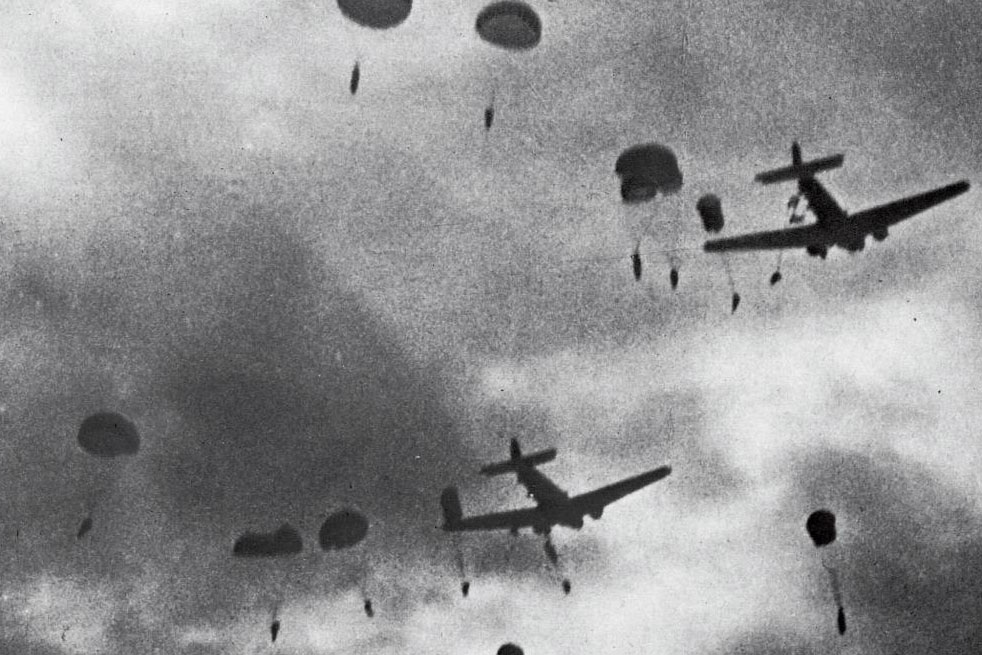
WWII – The Battle of Crete Day Tour
Tour Highlights
- Visit the Maleme airfield from above and Tavronitis historical bridge
- Discover the battlegrounds of Galatas and Ayia prison valley
- War monuments around the area of the battle
- Explore the WWII exhibitions in small museums and secret shelters
- Visit the German and British Commonwealth war cemeteries
- Analytic details about the historical battle of Crete
- Small-group tour ensures a more relaxing and personal experience
[…]Turning to Student, the Fuhrer said quietly: “Of course, General you know that after Crete we shall never do another Airborne operation. The parachute arm is one that relies entirely on surprise. That surprise factor has now exhausted itself…the day of the Paratroops is over”.
Adolf Hitler, Wolfschanze July 1941…
The tour’s description will start from the beginning of WWII and how the greatest war that the world have ever seen, affected East-South Europe, Greece and Crete. There will be analytic descriptions about operation “Marita”, the glorious Greek-Italian war of 1940 and under what circumstances the operation “Mercury” began. The battle of Crete was one of the most important war theatres in WWII and the resistance played a very important role to revive the allied troops’ morale around the world.
In this tour you will have the chance to see the key-locations of the battle of Crete. A few kilometers from Chania, is Maleme, Tavronitis and Galatas where the tour starts. Analyzing extensively the battle, there will be a detailed schedule for the rest of our day. Some of the locations you will visit are the German and British Commonwealth war cemeteries, high spots to have panoramic views and understand everything about the battle on a live map, secret shelters and monuments.
The general historical facts of the battle of Crete are known. In this tour you will discover the original details and the unknown stories behind the scenes. You will have the chance to tour around the places where heroism and hope was a life goal for the Cretan partisans and the Greek , British, Australian and New Zeeland troops. The battle of Crete changed the world in many different ways and especially the evolution of the airborne warfare. Join us and explore the legendary and glorious WWII history of Crete.
What is included in this tour
- Hotel pick up and drop off
- English speaking, local driver/escort
- All entrance fees
- Snacks and bottled water per person
- Transport by air-conditioned minibus/minivan
- All taxes, fees and handling charges
- Small-group tour (up to 18pax)
What is not included in this tour
- Gratuities (optional)
- Infants 0-2 years old: Free
- Children 3-11 years old: 80€
- Schedule: All Year - Every Monday and Thursday
- Location: Chania , Crete
*Available departures from all Cretan cities for private tours
- Duration: Approximately 6 hours
- Minimum participation: 2pax
- Maximum participation: 18pax
- Tour type: Small group tour (up to 18 pax)
*Note: There is availability for private tours upon request
- Available languages: English
- Pick-up times: 09:00-10:00 am
- Tour starts: 10:05 am
Terms & Conditions
- The company reserves the right to make minor changes in the program when this is considered necessary, for example in case of unfavorable weather conditions. This can be done without prior notice.
- Reservations must be made 12 hours before the tour. A cancellation must be done 5 days before the tour for 50% refund. In case of later cancellations, no refund will be made from the company.
- If a tour is cancelled due to low participation or bad weather conditions, the company will refund 100% of made payments
- In case of allergies, tolerances or food preferences please inform the company in advance.
Create your Private Tour with Us:
Above mentioned prices are for group participation. If you wish to book your own tour only with your family or perhaps colleagues, we will be happy to give you prices and ideas for a memorable tour. Please don’t hesitate to contact us for a unique offer.
If you wish to explore more options return to the Wine & Gastronomy Experiences page.
Passionate service
Secure booking, no hidden fees.
Rated 98% based on 1029 reviews

UK 0345 475 1815 USA (toll free) 877‑209‑5620 International 00 44 345 475 1815 [email protected] Rated 98% on feefo
Sign-in Latest News Subscribe Request Brochure
- Future Planning
- Military History and Battlefield Tours
- Classical History and Archaeological Tours
- Holocaust Tours
- General History Tours
- Experience Tours
- Walking Tours
- Early Periods
- 17th & 18th Century
- Victorian Era
- First World War
- Second World War
- Cross-Periods
- Destinations
- Our Expert Historians
- Historians Q&A
- Historical Tailor Made Tours
- School Tours
- Battlefield Studies
- Testimonials
- What to Expect
- Activity Levels
- Tour Diaries & Images
- Our Library
- Frequently Asked Questions
- Work For TCE
- General Booking Conditions
- Download Booking Form
- Tours by Date
- Tours by Theme
- Tours by Period
- Tours by Destination
- Latest News
- Request Brochure

Operation Mercury
The battle for crete.
Experience Tours General History Tours Military History and Battlefield Tours
Autumn 2025 (7 Days)
click here to register your interest
Your Holiday Essentials
Autumn 2025 (7 Days)
Activity Level : 2
Incl. travel from UK: N/A
Use the button below to register your interest in this tour
Tour Introduction
Operation Mercury is the fascinating story of a high-risk operation fought across a stunning Mediterranean landscape. Crete has to be one of the most beautiful Greek islands, and some would argue that there is no other place like it. To the modern mind it is known primarily as a beach holiday destination, however the landscape is wonderfully varied. From beaches and bays, to green coastal plains, imposing mountains and gorges, sleepy hillside villages to bustling, vibrant towns. Not to mention the warm, friendly, hospitable locals, a rich ancient and modern history and culture.
All of this can be explored throughout the tour as we follow the landings and hard-fought actions along the dramatic coast lines, the towns of Chania, Rethymnon and Iraklion, the White Mountains and down to the crystal-clear waters of Sfakia.
We are staying at two superb hotels in Chania and Heraklion, with time available in the evenings to soak up the delightful atmosphere of tavernas and family restaurants. What a comfortable way to experience exciting history!
Operation Mercury was the first and only time in history that a strategic objective has been taken by airborne forces alone. Despite being forewarned by 'Ultra' Luftwaffe intelligence decrypts that an attack was pending, General Freyberg's Commonwealth mix of British, Australian and New Zealand forces, recently evacuated from Greece, was overrun by Hitler's elite Fallschirmjaeger (Parachute) regiments.
The tour will chart and examine how successive waves of German parachute, glider and air-landed mountain troops managed to seize the island, vastly outnumbered and in the face of crippling losses. Our expert historian, Colonel Robert Kershaw is an experienced former Parachute Regiment officer, who has also served with German airborne forces. He wrote Sky Men the history of airborne forces and has extensively walked the ground.
- With soldier, historian and author Col Bob Kershaw
- The battles for Heraklion and Rethymnon
- The airborne landings at Maleme and Prison Valley
- The evacuation route
"We loved Bob Kershaw and we were very happy we had read his book beforehand, his maps were great as were his descriptions of battle. He has a great sense of humour and entirely approachable too."
Day 1 - Travel to Crete
Fly London to Chania and check-in to our hotel for four nights.
Day 2 - Maleme Airfield, Prison Valley and Galatas
We drive to Maleme and visit the German Assault Regiment gliding and parachute landing areas around the Tavronitis Bridge and the RAF Memorial. After climbing up Point 107, the vital high ground, we examine the costly German glider and parachute landings and the subsequent air landings under fire by the mountain troops to take the airfield, before visiting the German cemetery. The landings and attacks in Prison Valley and Galatas by the German Gruppe Mitte and the Commonwealth defence is covered from the Oassi Cretan Memorial, Lake Agia and Cemetery Hill. We visit the Allikanou Citizen Memorial to 108 villagers executed during German reprisals, as well as Galatas village and museum.
Day 3 - Chania and Souda Bay
The fighting around Chania and Souda Bay is covered with visits to the German Assault Regiment Memorial, 42nd Street and the Commonwealth War Memorial Cemetery. At the Venizelos Memorial we discuss General Freyberg's command on the Island against the German General, Student, based in Athens. The afternoon is free to explore Chania or relax at your hotel.
Day 4 - The Allied Retreat and Evacuation
We drive the Allied retreat over the White Mountains to Chora Sfakia via the withdrawal route through Megali Horofia, Apterra Stilos, Neo Horia, Vrysses and Askifou. There is an optional walk through the Imbrou Gorge to the memorial which marks the evacuation point (weather permitting).
Day 5 –The battle for Rethymnon
We check out of our hotel and travel to Rethymnon via Frangokastello and the monastery of Prevalli. Near Stavromenos we discuss the 19th Australian Brigade fight to repel the landings from German Gruppe Mitte. Afterwards we drive on to Heraklion and check-in to our hotel for two nights.
Day 6 – The battle for Heraklion
We visit the Historical Museum of Crete and explore the fighting around the Heraklion area. During the afternoon we will visit the Minoan Palace at Knossos and explore some of old Heraklion. We will also learn the story of the Kidnap of Heinrich Kreipe, a story which was made in to the film Ill Met by Moonlight.
Day 7 – Return. Fly Haraklion to London
Recommended Reading List
- Battle of Crete
Photo Gallery
- View of German gliders crash landed around the Travonitus bridge in 1941.
- Travonitus Bridge in 2018
- Travonitus bridge in 1941
- The 'two charlies' (hill tops) overlooking the airfield at Heraklion
- The submarine evacuation beach near the Monastery of Prevalli
- The straggling retreat across the White Mountains in 1941
- Souda Bay under attack by the Luftwaffe in 1941
- Souda Bay 2018
- Chania Minaret in 1941 & 2018
- A surviving 22nd Battalion Command Post
Tour Review
Take a look at some independent reviews of this tour by previous participants here
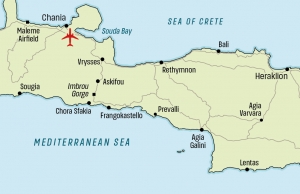
direct link
Subscribe to Our E-Newsletter
For up to date news as well as details about all of our tours please subscribe to our fortnightly e-newsletter

Quick Links
Military History and Battlefield Tours Classical History and Archaeological Tours Holocaust Tours General History Tours Experience Tours Walking Tours Future Planning Request Brochure Site Map
The Cultural Experience 11B Mansfield Park Four Marks Alton GU34 5PZ United Kingdom
UK: 0345 475 1815 USA (toll free): 877 209 5620 International: 00 44 345 475 1815
© 2015 - 2024 Midas Tours Ltd - Hosted by SWD - Legal Info - Terms of Use - Privacy Policy / Cookies - Sign-in

WWII – The Battle of Crete Day Tour
One might question the value of a WWII tour in a modern setting, but the Battle of Crete Day Tour offers a unique opportunity to step back in time and witness history firsthand. As visitors traverse the sites in Chania that played a crucial role in the 1941 battle, they are transported to a time of bravery and sacrifice.
But what makes this tour truly stand out is not just the historical sites themselves, but the immersive experience and knowledge shared by the guides.
Curious to uncover the hidden gems of this tour? Stay tuned for more insights into this journey through WWII history.
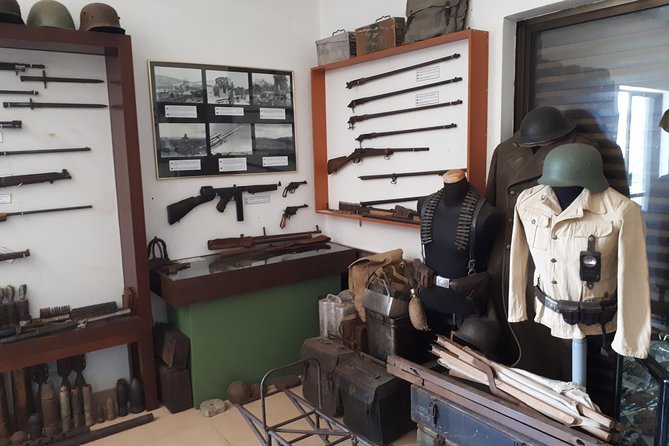
- Explore WWII history in Crete with expert guides.
- Engage with artifacts and historical sites linked to the Battle of Crete.
- Gain insights into the role of Crete in WWII and its significance.
- Experience a personalized tour with passionate guides for a deep historical understanding.
More great tours and experiences nearby.
- Snorkeling and Boat Tour in Crete
- Southern Crete Private Sailboat Cruise With Lunch From Sfakia
- Heraklion Area Small-Group ATV Safari With El Greco Village – Crete
- Rethymno Segway Tour
Tour Overview and Logistics
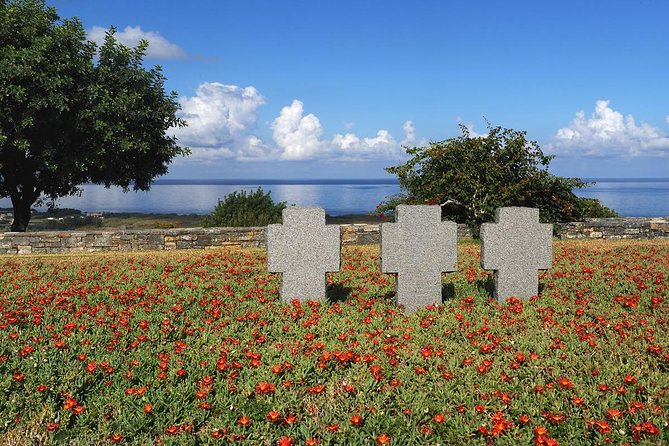
Set out on a captivating Battle of Crete day tour from Chania, delving into the pivotal events of 1941 when Nazi forces seized Crete from the Allies. This tour offers a comprehensive exploration of key sites such as Maleme airfield, monuments , cemeteries , and secret shelters .
The tour duration typically lasts a full day, providing ample time to take in the history of this significant event. Visitors have various transportation options available, ensuring convenience and flexibility throughout the tour. Whether traveling by bus, private car , or other means , participants can focus on absorbing the historical insights without worrying about logistics.
At the end of the tour, guests are brought back to the meeting point, concluding a memorable and educational experience.
Customer Reviews and Recommendations
Upon reviewing the Battle of Crete day tour, numerous visitors have shared their glowing feedback and recommendations. Customer insights highlight the knowledgeable and engaging guides, who provide informative tours with a passionate touch. Visitors highly recommend this tour for history enthusiasts seeking a personal and poignant experience that offers an insightful perspective on the historical significance of Crete in WWII. The small group sizes enable in-depth discussions, enhancing the overall tour experience. Guides’ passion for history and Crete further enrich the visit, making it beneficial for those looking to deepen their understanding of historical events.
Tour Highlights and Activities
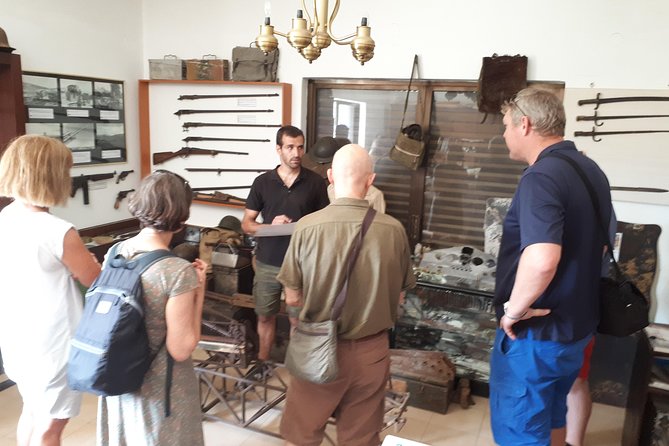
Visitors on the Battle of Crete day tour are immersed in a rich experience, exploring key sites and engaging in interactive activities that bring WWII history to life. They’ve the opportunity to visit Stelios private collection of WWII memorabilia, learning about the history of Greece and Crete firsthand.
Exploring battle areas, cemeteries , and secret shelters , participants appreciate the German and Commonwealth Forces Cemeteries, providing a poignant connection to the past. A special highlight includes a visit with a collector of military artifacts, where visitors can interact with historical weapons, enhancing their understanding through interactive learning experiences.
These activities allow guests to engage deeply with historical artifacts and gain a profound insight into the events of WWII.
Visitor Feedback and Recommendations
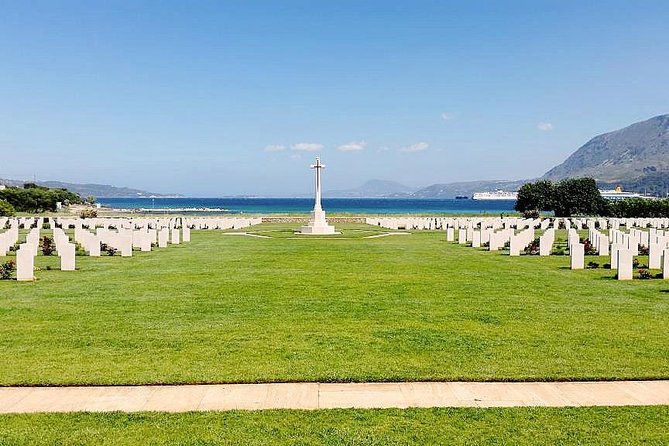
Feedback and recommendations from guests on the Battle of Crete day tour highlight the guide’s knowledge and enthusiasm, providing valuable insights for those interested in WWII history. Visitors have praised the tour for its historical insights and engaging guides.
Suggestions for improving the experience include enhancing interactive elements , providing more in-depth historical context, and offering additional opportunities for hands-on learning.
The tour is highly recommended for adults seeking a deeper understanding of the events surrounding the Battle of Crete and the role of the island in World War II. Guests have found the guides’ passion for history and Crete to be instrumental in enhancing the overall tour experience.
Language-Specific Feedback
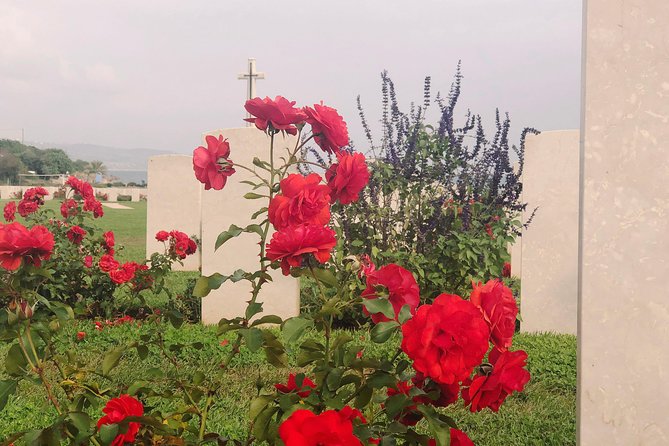
Guests have expressed their appreciation for the informative tour in German, citing the competent guide, the engaging on-site learning experience, and the wealth of historical information provided. Competent guides play a crucial role in ensuring visitors receive a comprehensive understanding of the Battle of Crete. The guide’s ability to convey complex historical narratives in German enhances the overall tour experience.
Plus, the presence of historical artifacts adds a tangible element to the stories shared, making the events of WWII more vivid and engaging for participants. The combination of a knowledgeable guide, interactive learning opportunities, and a focus on historical artifacts makes this tour a must-visit for those eager to delve deeper into the significant events that unfolded in Crete during World War II.
Background Information
During World War II, the island of Crete became a pivotal battleground in the conflict between Allied and Axis forces. Crete’s role in WWII history was significant, shaping the course of the war in the Mediterranean region.
- Crete was the stage for intense fighting between German paratroopers and Allied forces.
- The Battle of Crete marked the first major airborne invasion in military history.
- Crete’s strategic location made it a target for Axis forces seeking to control the eastern Mediterranean and cut Allied supply lines.
This historical context sets the stage for the immersive experience offered by the Battle of Crete Day Tour, delving into the island’s wartime past and the events that unfolded during this critical period.
In navigating the Battle of Crete Day Tour, you will find clear and detailed instructions to ensure a smooth and enriching exploration of key historical sites.
The tour begins at Chania, where knowledgeable guides will provide insight into the historical significance of each location visited. Visitors will have the opportunity to explore the events of 1941 when Nazi forces seized Crete from the Allies.
From the Maleme airfield to monuments , cemeteries, and secret shelters, every stop offers a unique perspective on the impact of WWII on Crete.
The tour culminates back at the meeting point, leaving participants with a profound understanding of the island’s role in this pivotal moment in history.
We've also reviewed these nearby activities
- Boat Trip With Guided Snorkeling Tour & SUP in Chania
- Full-Day Guided Off-Road Tour of Crete
- Spinalonga Regular Trip -daily At 12:30 From Agios Nikolaos
- Crete Panoramic Tour in 4×4: Aposelemis Dam and Cave of Zeus
- Sea Kayaking Sfakia, Crete
- Agiofarago Gorge and Secret Beach Private Day Trip With Lunch – Crete
Common questions
Are there any opportunities for visitors to interact with locals who lived through the battle of crete.
When exploring the Battle of Crete, visitors can engage with locals who lived through the events, offering firsthand survivor stories . These interactions provide a unique and personal perspective on the historical significance of the battle.
Can Participants Expect to See Any Original Artifacts From the Battle of Crete During the Tour?
Participants can expect to see original artifacts from the Battle of Crete during the tour. In addition, they have the opportunity to interact with locals who lived through the historic event, providing a unique and immersive experience.
Is There Any Focus on the Impact of the Battle of Crete on the Local Population and Culture?
When exploring the impact of the Battle of Crete on the local population and cultural heritage , visitors gain insights into how this historic event shaped the lives of residents and influenced the region’s traditions and identity.
Are There Any Specific Stories or Anecdotes Shared During the Tour That Are Not Commonly Known?
During the tour, visitors often hear lesser-known stories that offer a unique perspective on the Battle of Crete. Personal experiences shared by guides add depth and emotion, shedding light on individual accounts not commonly known.
How Long Has the Tour Guide Been Conducting Tours Related to WWII History in Crete?
The tour guide has been conducting tours related to WWII history in Crete for over a decade, showcasing extensive experience and expertise in the subject matter. Visitors benefit from the guide’s in-depth knowledge and passion for sharing historical insights.
Not for you? Here's a few more great experiences in the region
- Chersonissos: Mini-Train City Highlights Tour
- Crete Small-Group Craft Brewery Tour With Tastings or Lunch
- Crete: Cretan Culture Tour and Pottery Workshop
- Rethymno Area: Gramvousa Island & Balos, Boat Ticket Extra
- Heraklion: Gramvousa Island Day Trip & Balos Beach
- Crete: Haralabakis Winery Tour & Wine Tasting
- Heraklion: Catamaran Sailing Trip to Dia Island W/Lunch
- Heraklion: Historic and Culinary | Private Tour
- From Crete: Chrissi Island Day Trip by Boat With Swim Stop
- Marathi Private Boat Rental No License Required – Crete
- Private Tour to Cretan Villages of Apokoronas & Profit Ilias
Final Words
Enjoy the history of WWII with the ‘WWII – The Battle of Crete Day Tour.’
With knowledgeable guides, interactive elements , and small group sizes, this tour offers a profound understanding of the pivotal Battle of Crete.
From exploring key sites to hearing personal anecdotes, visitors are treated to a captivating and educational experience.
Don’t miss out on this top-rated tour that brings history to life in Chania.
Similar Posts
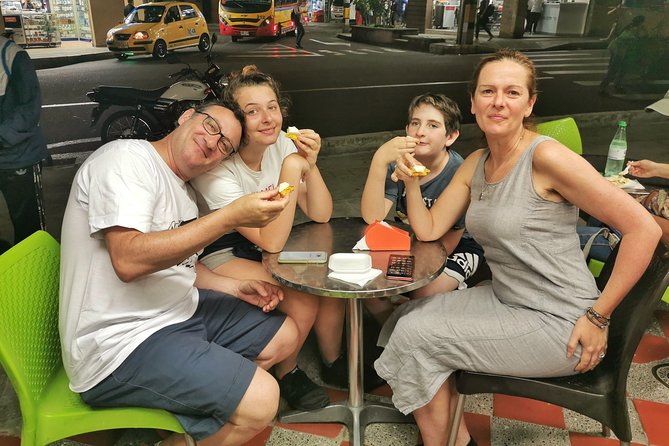
Food Tour in Medellin: An Authentic Culinary Experience
Set out on a culinary journey like no other as you explore the vibrant flavors of…

Become the Art You See!
Amsterdam awakens as art enthusiasts allure to ‘Become the Art You See!’ The allure of embodying…
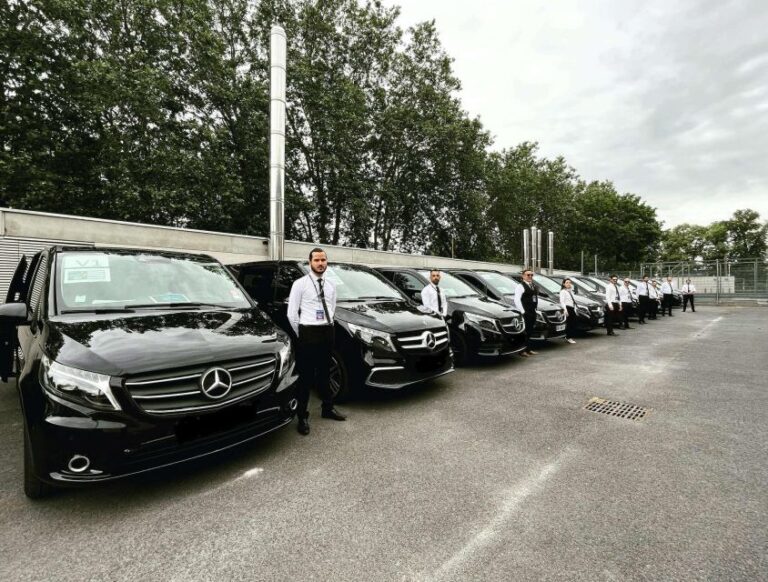
Courchevel: Private Transfer to Grenoble Airport
In the realm of luxurious alpine getaways, Courchevel reigns supreme as a haven for discerning travelers…
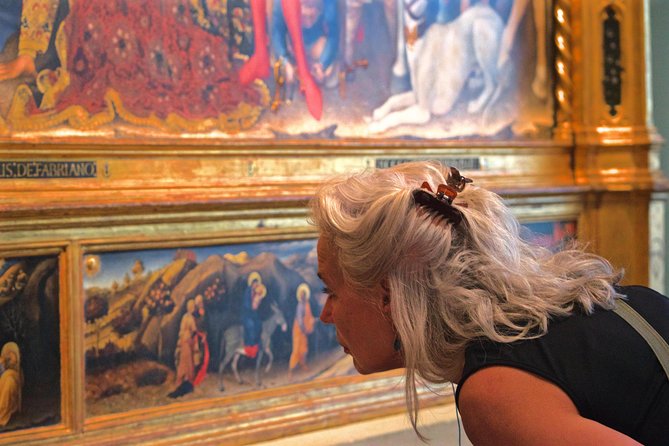
Uffizi Galleries Florence – Incredible Private Tour
Like a key unlocking a hidden treasure trove, embarking on a private tour of the Uffizi…

Sedona, AZ: Grand Canyon Guided Tour and Historic Railway
While some may hesitate due to the duration of the tour, the Grand Canyon Guided Tour…
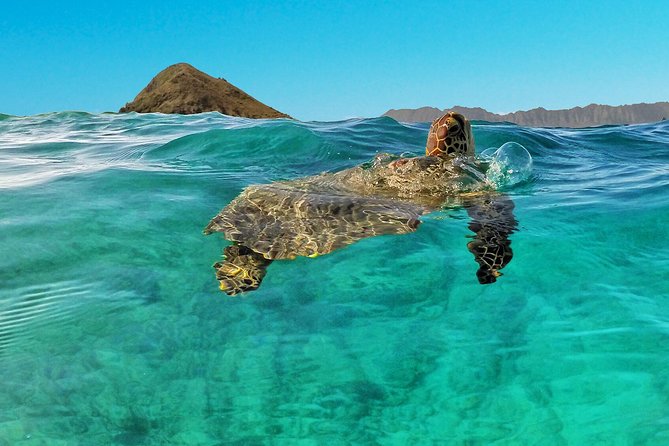
Kailua 2-Hour Guided Kayaking Excursion, Oahu
Set out on a lesser-known journey along the azure waters of Kailua Bay with the Kailua…
CALL US: (+30) 28220 24249 | (+30) 28220 23087 | (+30) 697 409 2913
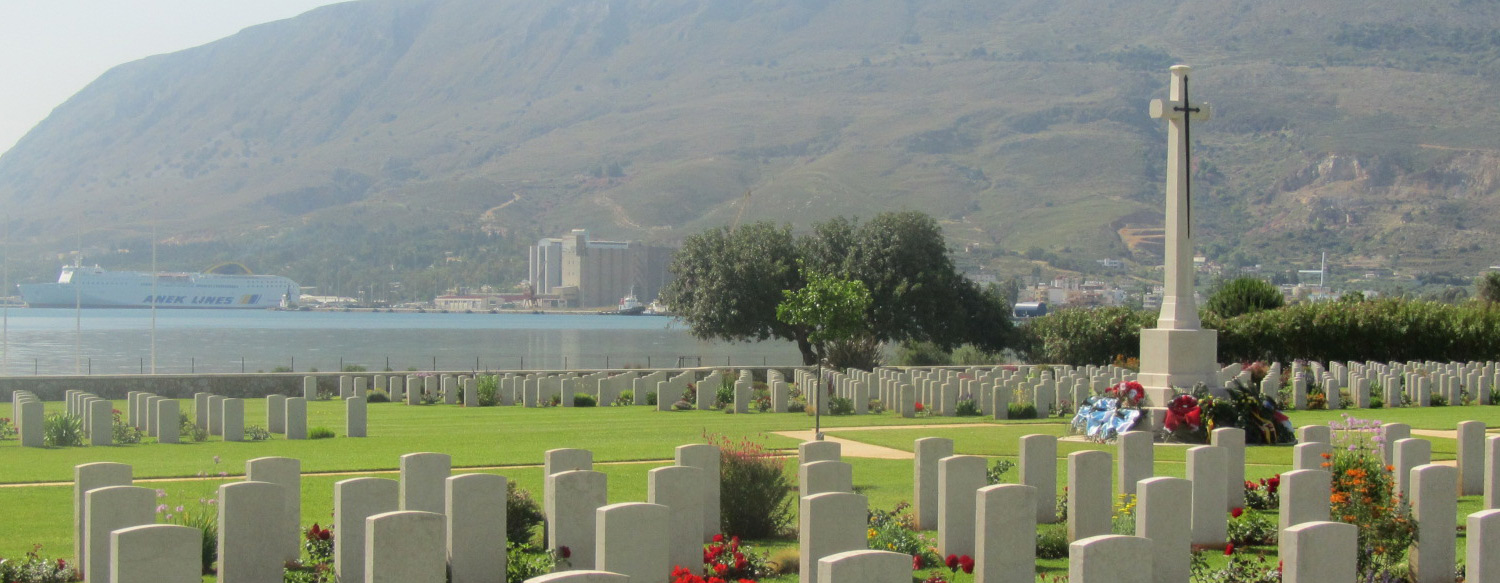
Battle of Crete – Book with Strata Tours
A historical experience: the battle of crete experience tour, “hence we shall not say that greeks fight like heroes, but that heroes fight like greeks” – winston churchill.
Experience Crete from a different perspective with our Battle of Crete Tour.
It is no ordinary dry military history but an exploration of the Chania and Kisamos area and its relevance to the history of WW2 in Crete. The tour involves visits to the Souda commonwealth war cemetery, German war cemetery, the village of Galatas and bridge in the Tavronitis and Maleme area.
A traditional Cretan lunch is included plus transport and an excellent and informative English-speaking guide.
This tour is booked on a request basis only and the price depends on the number of people participating.
- 9: 00- 16:00
- German War Cemetry (Maleme)
- Galatas memorial
- Tavronitis (bridge monument)
- Souda Bay Allied War Cemetery
- Meal included
This tour is booked on a request basis only and the price depends on the number of people participating. Make a request
- Unique and personal tour. Can be tailor made for your requirements and war family history if relevant
- Informative guide
- Wonderful scenery
- Delicious traditional Cretan lunch
REQUEST NOW
By sending this e-mail you will receive a full description of the tour and booking details
I am interested in booking for Battle of Crete - Book with Strata Tours Day tours
I am interested in booking for
Subscribe to Our Newsletter
Kissamos, Tzanakaki Square, T: +30 28220 24249
WWII – The Battle of Crete Day Tour
Exploring WWII history on the ‘WWII – The Battle of Crete Day Tour’ offers a unique opportunity to witness the island’s significant past unfold. With expert guides leading the way, visitors are guided through key battle sites and hidden shelters, providing a deeper understanding of the events that shaped Crete during the war.
The tour promises a compelling journey through time, shedding light on a pivotal moment in history that continues to intrigue and captivate enthusiasts.
Just The Basics

- Gain deep insights into the Battle of Crete , focusing on Nazi occupation in WWII.
- Explore key battle sites like Maleme airfield, monuments , cemeteries , and secret shelters.
- Experience a historically accurate tour with knowledgeable guides and actual battleground visits.
- Benefit from exceptional customer service, support, and a seamless booking process through Viator.
Here's some more nearby activities we've reviewed
- Crete: Private Taxi & Transfer From Heraklion to Rethymno
- Sailing Day on the Island of Dia With Departure From Heraklion
- Crete: Off-Road Quad Safari & Cave Exploring
- Create Your Own Traditional Cretan Soap
Tour Overview
The Battle of Crete Day Tour provides a comprehensive exploration of key WWII sites on the island. Visitors engage in battlefield exploration and gain war history insights during this guided tour. The focus lies on the events surrounding the Nazi forces taking Crete from the Allies in 1941.
Participants will have the opportunity to visit significant locations such as the Maleme airfield, monuments , cemeteries , and secret shelters. The tour aims to offer a vivid and informative experience, shedding light on the historical significance of the Battle of Crete. It’s a weather-dependent activity that requires a minimum number of travelers to proceed.
The tour concludes back at the meeting point, providing a well-rounded understanding of the island’s wartime past.
Key Battle Sites Visited

Visitors on the Battle of Crete Day Tour explore significant battlegrounds from World War II, seeing the historical context of the conflict. The tour includes visits to strategic locations where intense fighting took place, offering insights into military strategy and the challenges faced during the battle. Below is a table highlighting some key battle sites visited during the tour:
Historical Insights Shared

Exploring the Battle of Crete Day Tour provides a vivid understanding of the historical insights surrounding the WWII conflict on the island. The tour emphasizes historical accuracy by visiting actual battlegrounds and focusing on presenting factual information.
Expert insights are shared by knowledgeable guides who possess unparalleled local knowledge and a passion for WWII history. Visitors benefit from the guides’ competence and the efforts made to enhance the tour’s quality with valuable historical artifacts displayed in a private museum.
This commitment to historical accuracy ensures that participants gain a deep understanding of the events that transpired during the Battle of Crete in 1941, making it a highly recommended experience for those interested in WWII history.
Visitor Reviews and Recommendations
Upon experiencing the Battle of Crete Day Tour, travelers consistently laud the insightful journey and recommend it for WWII history enthusiasts. Visitor feedback highlights the tour’s historical accuracy and the depth of knowledge shared by the guides.
With a total of 52 reviews and a 5-star rating, visitors praise the tour for its focus on historical facts and the authenticity of the locations visited. Testimonials often mention the excellent service provided, knowledgeable guides, and the overall insightful experience gained from the tour.
Many visitors appreciate the personal and poignant insights into Crete’s history, making this tour highly recommended for those interested in exploring further into the events of World War II.
Focus on Guide Expertise
The expertise of the guides on the Battle of Crete Day Tour is a standout feature, enhancing the depth and authenticity of the historical experience. Their guide knowledge and commitment to historical accuracy ensure visitors gain a comprehensive understanding of the events that unfolded during WWII. The tour guides possess unparalleled local knowledge and a profound passion for WWII history, enriching the tour with insightful commentary and detailed explanations at each location. Visitors benefit from the guides’ highly praised competence, which brings the past to life through personal and poignant insights. Plus, the inclusion of a private museum with valuable historical artifacts further solidifies the tour’s commitment to delivering an informative and engaging experience.
Customer Support and Booking Information

Customer inquiries regarding the Battle of Crete Day Tour can be promptly addressed through Viator’s Help Center. Booking assistance for this historical tour is easily accessible via Viator, offering a seamless and convenient booking process.
The tour highlights include an overview of the Battle of Crete in WWII, guided visits to key battle sites, exploration of Maleme airfield, monuments, cemeteries, and secret shelters. With tours priced from $105.08, visitors can explore into the history of Nazi forces taking Crete from the Allies in 1941.
It’s recommended to review the terms and conditions, as changes less than 24 hours before the tour aren’t accepted. Secure your spot to experience a memorable journey through significant WWII battlegrounds.
Here's a few more nearby tours and experiences we have reviewed.
- Knossos, Archanes, and Winery Private Day Trip From Limenas – Crete
- From Heraklion: Small Group 6h Sunset Sailing Trip to Dia Island
- Full-Day Hiking and Running Adventure in South Crete
- Spinalonga, Elounda, Kolokithia, and Agios Nikolaos Day Trip – Crete
- Knossos Palace (Family Friendly Tour)
- Samaria Gorge Transfer From Chania (Price per Group of 6)
Common questions

Can Participants Expect to See Any Remnants of the Battle Still Present at the Visited Sites?
Participants on the Battle of Crete Day Tour can expect to see remnants of the historic battle still present at the visited sites. The tour offers a firsthand glimpse into the tangible traces of the Battle of Crete.

Are There Any Specific Requirements or Restrictions for Participants to Join the Tour?
For participants to join the tour, there are no specific requirements or restrictions. The tour is open to all interested individuals who want to explore the Battle of Crete in WWII with knowledgeable guides.
How Long Is the Duration of the Tour, Including Travel Time to and From the Sites?
The duration of the tour, including travel time to and from the sites, is approximately 6 hours. Visitors will explore battle remnants with knowledgeable guides. No specific equipment recommendation is provided; comfortable attire is suggested.
Is There Any Special Equipment or Clothing Recommended for Participants During the Tour?
For the Battle of Crete Day Tour, participants are advised to wear comfortable shoes and clothing suitable for walking. No special equipment is required. Recommended attire includes sturdy footwear and weather-appropriate clothing.
Are There Any Opportunities for Participants to Interact With Local Residents or WWII Survivors During the Tour?
During the tour, participants have the chance to engage in local interactions and hear firsthand WWII stories from residents. These personal encounters offer a unique perspective on the historical events and add depth to the experience.
Here's more of our most recent tour reviews happening neaby
- From Chania: Balos Lagoon & Falassarna Private 4WD Road Trip
- Best of Heraklion : Knossos – Arch.Museum – City Tour
- Crete: Haralabakis Winery Tour & Wine Tasting
- Heraklion: Cretan Cooking Lesson With Lunch in Arolithos
- Chania: Full-Day Sailing Cruise With Lunch
- Private Hikking to Imbros Gorge With Lunch
- 2-Hour Jet Ski Adventure to Balos
- Full Day Tour in Knossos Palace,Lassithi Plateau and Zeus Cave
- Crete Full-Day Sightseeing Tour to Knossos Palace and More (Mar )
- From Heraklion : Small Group 6 Hours Sailing Trip to Dia Island
- Full-Day Trip to Santorini Island by Boat From Heraklion
The Wrap Up
Experience a journey through WWII history on the ‘WWII – The Battle of Crete Day Tour.’
With knowledgeable guides, key battle sites, and historical insights , visitors will gain a profound understanding of this pivotal moment in time.
Don’t miss the opportunity to explore Crete’s wartime legacy and engage fully in the events of the Battle of Crete.
Book your tour today for an enriching and unforgettable experience.

Battlefield Tours
Home / Cultural & Historical Heritage / Battlefield Tours
Explore Tours & experiences in Crete
In 2016, we decided to create a battlefield tour in Chania and focus on WWII and the battle of Crete facts. Yiannis, the youngest member of our company and his team, loving the 20th century’s war history, is studying and reading about the battle of Crete for years. Running these tours for 2 years we got in touch with a lot of history lovers, descendants of the battle’s fighters, and a lot of other people sharing the same passion with us.
People in Crete know and feel proud about this station of our recent history. Some of them are preserving this memory by collecting relics from the war, keeping themselves aware of old and new stories, small but important facts of this era. Cretans fought with the allied forces to defend our island and today, almost 80 years after the war, strong ties are connecting Cretans, Australians, British and New Zealanders. An old hate became a new friendship and German visitors are more than welcome today to our island.
In order to keep these memories alive and honor the new and old friendships between our people, we decided to develop more this simple day tour and create a whole project about the Battle of Crete. This battle today is not so popular because of other and bigger battles of WWII in the Western and the Eastern front. But it is the largest airborne invasion in the world’s history and equally important for the war’s end because of the strategic position of this island.
Our aim and hope are to introduce the people to the historical truth about the battle of Crete, visit together the battlefields and pay our respects to these people who gave their lives hundreds and thousands of miles away from their home. We consider this as a duty to our ancestors and we are trying to make this history more known. On this page, you will discover the hidden treasures from the Battle of Crete and follow our tours to Crete’s war theater.
Activity Theme
Max / Per Person
Tour categories, extra options.
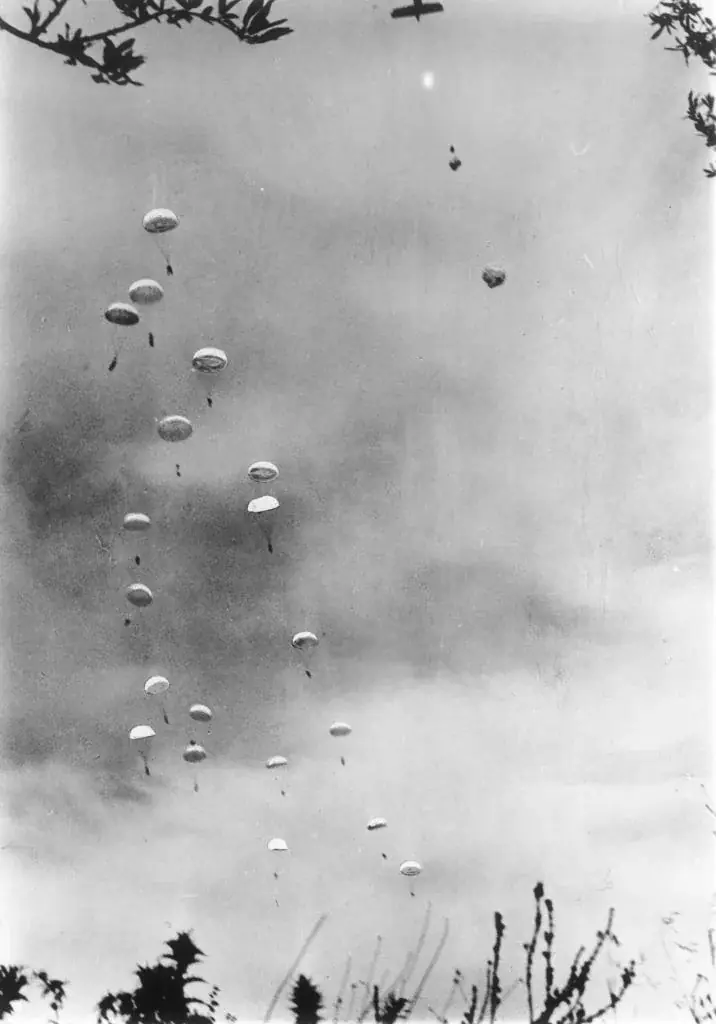
WWII – The Battle Of Crete 2 Days Private Tour
Battlefield tours cultural & historical heritage multi-day tours, € 1.040.
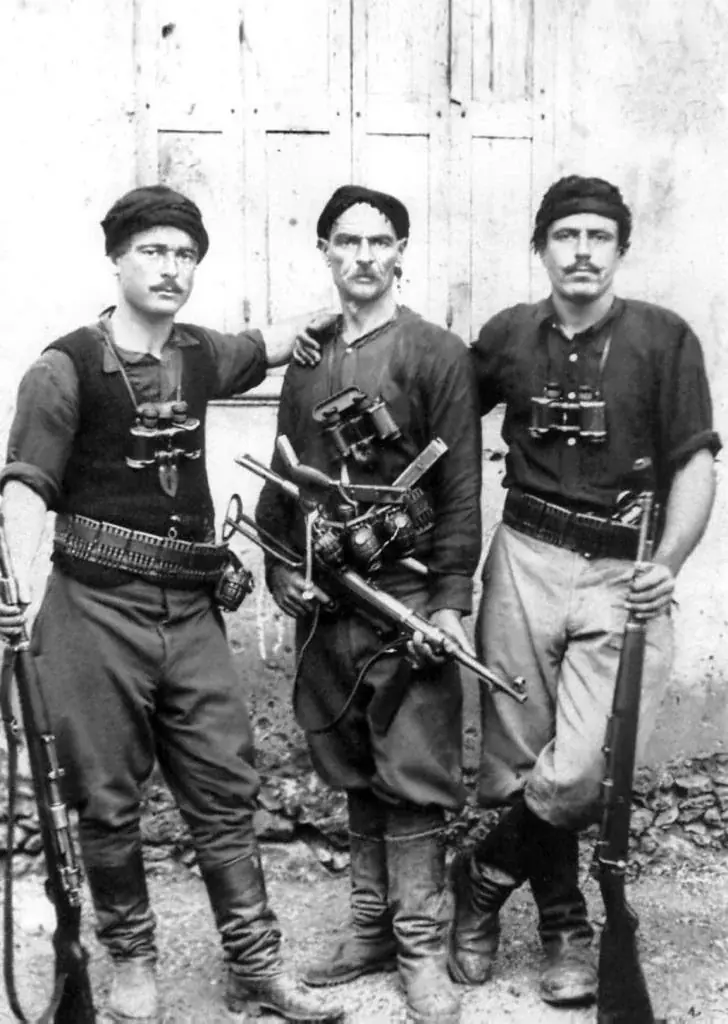
Battle of Crete Tour – Explore the WWII battlegrounds of Chania
Battlefield tours cultural & historical heritage winter tours, (122 reviews), from: € 95, can't decide let us guide you.
Take our fun and quick quiz to discover the perfect tour that aligns with your unique interests and desires. Whether you’re a history enthusiast, a foodie, an adventurer, or simply seeking relaxation, our personalized recommendations will ensure your journey matches your preferences. Take the quiz now and embark on the experience of a lifetime!
YEARS OF EXPERIENCE
Tour options, local partners, satisfied clients, top rated tour booking site.

- Tel: +30 28210 43243
- Get a quote: +30698 0909039
- [email protected]
- Address: Episkopou Chrisanthou 39, Chania
- Our Travel Blog
- Battle of Crete Blog
Destinations
- Tours In Chania
- Tours In Rethimno
- Tours In Heraklion
- Tours In Lasithi
Excellent Rated
- TripAdvisor
- Terms of Use
- Refund and Returns Policy
Subscribe now and get instant FREE Access to Unpublished Hand-picked Deals!
©2024 GS Tours. All Rights Reserved. Website by: Inglelandi Digital Agency

- Fax: +30 28210 44761
ANZAC Tours in Greece: The Real History Behind WWII Battle of Crete
The Greek Islands are a dream destination on every bucket list, and for good reason.
Rocky islands rimmed with paradisiac azure beaches, flavour-packed fresh fruit & veggies, and quaint whitewashed cyclidic homes that feel like your stepping into a movie.
I have a partiality for smaller Greek Islands with soothing rhythms, untouched by mass tourism. But when I recently visited Crete, the largest of the Greek islands, I was utterly dazzled.
Crete doesn’t just have charming towns, immaculate beaches, and some of the best food in Greece, it also has an extraordinary World War II history, entwined with Australia and New Zealand.
Sure, I wanted to spend my time in Crete relaxing under a beach umbrella and filling up on Cretan cheese pies, but as a true blue Aussie, I also wanted to witness firsthand what life would have been like for ANZAC soldiers defending the island during the climactic WWII Battle of Crete .
That’s exactly what I got when I joined Specialty Tours Greece’s 5-day tour Walking in the Footsteps of ANZAC Soldiers in Crete (yes, it’s a mouthful!).

About the Tour
This small-group 5-day tour explores the island of Crete, focusing on sites most significant to the ANZAC soldiers, like the places they hid from enemy forces, and beaches where they evacuated. It also includes time to explore the modern city of Chania and ruins of the ancient Minoan palace in Knossos .
The tour runs every year around mid-May to align with annual war memorial services. May is just before peak tourism season in Crete, so while the weather is mostly sunny, we dodged the summertime crowds.
Transfers to and from Crete are covered within the tour package, as well as 4 nights’ accommodation inclusive of breakfast and dinner.
If you’d like to join the next Walking in the Footsteps of ANZAC Soldiers in Crete tour, get in touch with:
- ANZAC Tours in Greece (Facebook), or email Athina at [email protected] (Greece); or
- Global Tours , or email Frank at [email protected] (Australia / New Zealand)

Note: We only attended the 5-days in Crete portion of a larger tour that also spends a day in Athens then continues to follow the footsteps of ANZAC soldiers in Italy.

Battle of Crete 101
In case, like mine, your high school education skipped over the crucial Battle of Crete , here’s the basic gist:
- Under former Italian Prime Minister Benito Mussolini , Italy invaded Greece on October 28 th 1940 starting the Greek-Italian War .
- Cretan soldiers were sent to the defend mainland Greece and Allied forces garrisoned Crete in case of a naval attack.
- Greece succeed in pushing the Italians back into Albania until March 1941 when German forces were sent to reinforce Italy.
- Mainland Greece was lost to Germany on 20 th April 1941.
- Surviving Allied troops evacuated the mainland and reinforced the garrison on Crete, although most had lost their weapons and equipment.
- The Germans invaded Crete by air on 20 th May 1941, starting the Battle of Crete.
- After a short initial success, the Allies were pushed back and Germany took Maleme Airfield , allowing them to bring in reinforcements.
- Allied forces fought fiercely alongside civilians for 6 days with limited supplies (remember the Cretan soldiers and weapons had been sent to defend the mainland).
- Crete was lost to Germany on 27 th May 1941. Surviving Allied soldiers were evacuated on the south side of Crete by the British Royal Navy.
- Because of the delays to the German forces in Greece, they were unable to reach Russia before winter turning the tide in WWII.
The Battle of Crete was one of the most significant battles of WWII as it was the first airborne invasion in military history, the first time Germans encountered mass resistance from civilians, and the first time the Allied forces used intelligence decoded by the Enigma machine .
Victory was shallow for Nazi Germany. Ultimately the Battle of Crete became the turning point in the war and beginning of the end for Nazi Germany.

Greece tip: Want to book your own ferry from Athens to Chania ? I suggest using Bookaway.com.
Getting to Crete
We met our tour group in Athens, took a minibus to Piraeus port , and embarked on a 9-hour, overnight ferry to Heraklion Port in Crete.
This isn’t a typical ferry, it’s more like a mini cruise ship. Getting a decent night sleep wasn’t a problem as we had our own cosy cabin with bunk beds and a private bathroom.
A series of escalators at the ferry entrance ensured we didn’t have to lug our suitcases up stairs (yay!). It also had 2 reasonably-priced restaurants (a la carte & buffet) and a 24-hour bar.
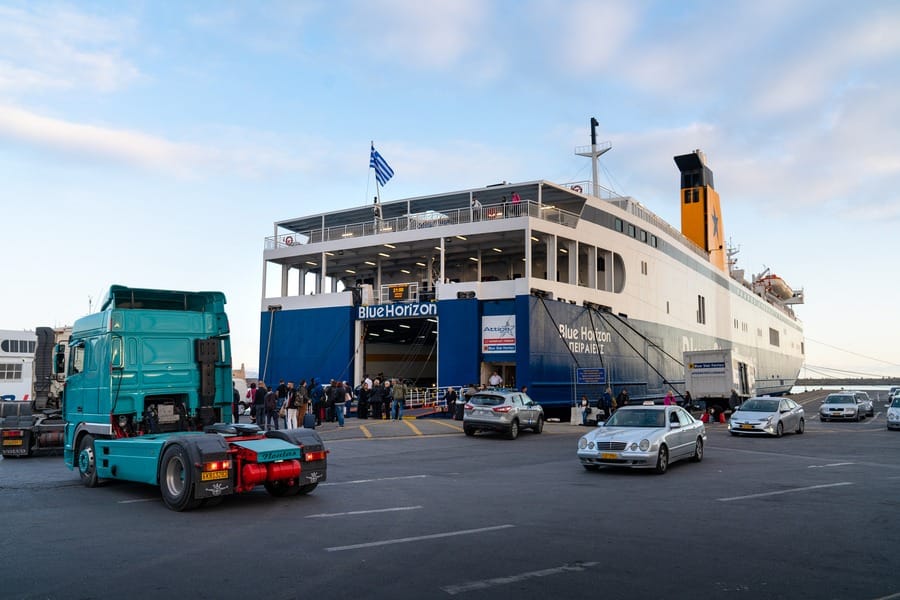
We landed in Heraklion at 6:30am and met our cheerful guide Ritsa and driver Kostas who showed us around Crete for the next 5 days.

Paying Respects at War Monuments
Clashes throughout the Battle of Crete stretched far and wide across the island and today war monuments honour ANZAC soldiers who fought bravely. We visited as many of these sites as possible, gaining a vivid picture of the darkest days of 1941. The tour passed rocky gorges and steep mountains that the soldiers trekked to evacuate via Preveli Beach and Sfakion Bay . Our guide, Ritsa shared moving stories that took place at each site, most involved loyalty and mateship with relatively happy endings.

We made frequent stops on the way to and from the monuments at scenic lookout points or nearby towns. On the way to the monument at Chora Sfakion , we made an impromptu stop at Asfikou War Museum , a private collection of WWII uniforms, parachutes, weapons and personal belongings seemingly in the middle of nowhere. The richness of the exhibit was completely unexpected and provided surreal insight into the daily lives of Allied soldiers, German soldiers, and civilians alike.

War monuments we visited included:
- 30th and 33rd Squadron RAF Memorial near Maleme Airfield
- Battle of Galatas Monument in Galatas Village
- 42 nd Street Memorial in Tsikalaria
- Monument to the Allied Forces in Chora Sfakion, one of the main evacuation points
- Preveli Monastery where several soldiers hid before evacuating at Preveli Beach, and
- Greek Australian War Memorial where we laid a wreath.

The monument to the Battle of Galatas was the smallest we visited but left the biggest impact. I’d dare say it was the highlight of the tour. Next to the monument is a modest 1-room museum with war photos, weapons, and certificates that doubles as the town’s medical centre. Inside the room were a handful of local seniors waiting to see a doctor. Among them, 93-year-old Chariklia, who was a 14-year old girl at the time of the war.

Our group was honoured when Chariklia volunteered to share her memories of the war with us. Recalling anecdotes as if it happened yesterday, she starting with two New Zealander soldiers who defended her family, Dave and Les. She never found out if they safely evacuated.
The Allied soldiers left an unforgettable impact on local communities, fighting beside civilians “as one fist”. Fighting so far from their homes, as if this land was their own.
Families like Chariklia’s sheltered soldiers in their homes, disguising them in civilian clothing to assist with their evacuation. Although Chariklia could only speak Greek (Ritsa translated her stories for us), her vivid emotions and expressions said everything. We felt the powerful bond between Cretans and ANZACs forged in conflict, strong as ever 78 years later.
I had goose bumps.
We saw firsthand how the soldiers’ sacrifices changed the lives of ordinary Cretans like Chariklia, which made the Australians and New Zealanders in our tour group extremely proud of our shared heritage.

Attending the Annual Memorial Service at the Allied War Cemetery, Souda Bay
We visited 2 war cemeteries as part of our ANZAC tour of Crete, the Maleme German Military Cemetery and the Allied War Cemetery at Souda Bay. Both were beautifully landscaped with tidy lawns, blooming flowers, and birds delicately chirping. Peaceful resting places for soldiers whose lives ended too soon.
At the Allied War Cemetery one of our group members, Frank, found the grave of his dad’s cousin and had the opportunity to lay a wreath. A small office at the cemetery holds a comprehensive list of the names and graveyard locations of each soldier, so if you have a relative buried in Crete, it’s easy to locate their resting place to pay your respects.

We returned to the Allied War Cemetery on our last day in Crete, the 20 th of May, to take part in the official commemorative ceremony. In attendance were the families of veterans from Commonwealth countries and descendants of the Cretans who fought alongside them.
The assistant chaplain for the Anglican Church in Greece lead a touching service with prayers for the fallen before representatives from the Greek Armed Forces, Commonwealth countries, United States and Germany payed their respects by laying wreaths.
With ceremonies as moving as this, I’m hopeful our generation will never forget the pain of war.

Walking Through Ruins of the Minoan Palace Behind the Legend of the Labyrinth
Although the focus of our tour was on WWII we also saw a little ancient history at the archaeological site of the Minoan Palace of Knossos . The palace was more than just the residence of the royal family, it was also the cultural, religious, and political centre of the Minoan civilisation from 2,000 BC to 1,100 BC. As you might expect, this archaeological excavation site is massive.
Many ancient buildings have been reconstructed so visitors can visualise the extreme opulence and advanced technologies to which this bronze age civilisation was accustomed. Reconstructions include colourful frescoes, mosaics, and repairs to an up-hill water system. Yes, you read that correctly.
Ritsa provided a walking tour of the palace ruins, pointing out significant sites like the royal chambers, throne room, and a series of winding corridors said to have inspired the Greek legend of the minotaur and the labyrinth .

After the tour, we visited the Heraklion Archaeological Museum , home to precious artefacts discovered at the Knossos archaeological site. Exhibits included Neolithic creations like loom weights and sewing needles made from animal bones, gold jewellery imported from Egypt, ceramic and stone pots and vessels, farming tools (very similar to the ones we use today), and the original frescoes from the Minoan palace.

Exploring Chania
One of my favourite things about this tour was the balance between visiting historical WWII sites and experiencing modern Crete. Our itinerary included two stops in Chania, one of the main cities and cultural hubs along the north coast of the island.
Chania is divided into 2 distinct sections, an old town and a modern city. The old town is focused around the Venetian-era harbour with sections of the Venetian city walls and several historic buildings still remaining. Many of these old stone buildings now house modern stores, restaurants or apartments, creating a charming contrast between old and new.
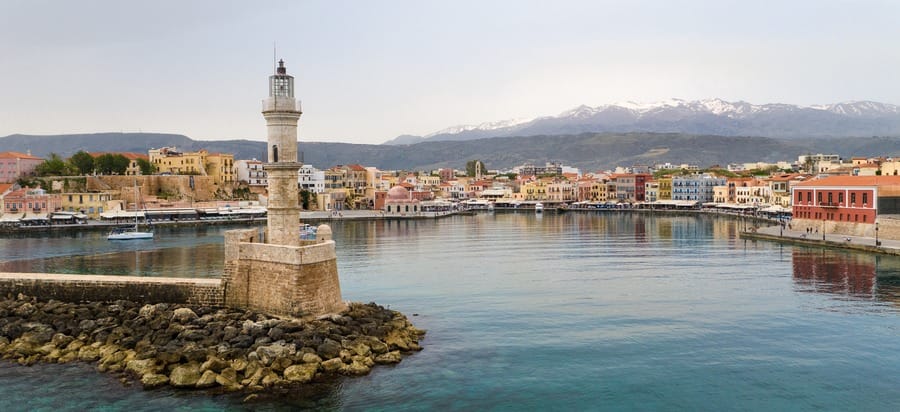
Ritsa guided us on foot around the old town, visiting the Old Chania Market to sample fresh, local produce, exploring “Leather Lane” to see locally made leather jackets, shoes, and handbags, and through a series of quaint alleyways to discover Chania’s architectural history.
Ritsa said the best way to explore Chania was to continuing wandering through the alleyways and left us with free time to do exactly that.

Travel tip: While in Crete I used my trusty Tep Wireless internet hotspot to stay online wherever we went. It supports up to 5 devices at a time. Read my full review...
Where to Stay in Crete
The tour included 4 nights’ accommodation at the Santa Marina Beach Resort , part of the Giannoulis Hotels & Resorts Group .
The hotel comprises of 3 sections connected by a pedestrian underpass. We stayed in the Beach Complex with gorgeous views of the sparkling ocean from our private balcony. The ground floor lobby has direct access to the white sandy beach, lined with those beach umbrellas I’d been dreaming of!

The Pool Complex and Pearl Wing are located across the underpass with easy access to the swimming pool, pool bar, and gym. The tour itinerary kindly left a few hours each day for us to swim at the beach or enjoy a drink in the lobby or by the pool.

Breakfasts and dinners were in the main buffet restaurant which served a huge variety of classic and modern Greek cuisine as well as a few international dishes. One night, we were treated to traditional live music and Cretan dancing.

Santa Marina Beach Resort is the perfect accommodation for families and groups visiting Crete.
Where Else To Stay In Crete
If you want to travel to Crete on your own, I also recommend these 3 other hotels:
Santa Marina Plaza
Santa Marina Plaza is an adults-only boutique hotel just down the road from Santa Marina Beach Resort. The hotel’s uber-relaxing vibes make it the ideal place to unwind and restore.
Grand Bay Beach Resort
Another adults-only hotel, Grand Bay Beach Resort has 9 different pools! The main infinity pool overlooks the serene sea. The other pools are smaller and shared between designated rooms.
The hotel runs a series of regular activities, including sunset yoga, Greek dancing, and olive oil tasting. Guests have the option to book all-inclusive or premium all-inclusive accommodation so there’s no need to worry about meals, drinks at the bar, daily activities, or even getting a massage during your stay, its already included. Did somebody say “relaxing vacation”?
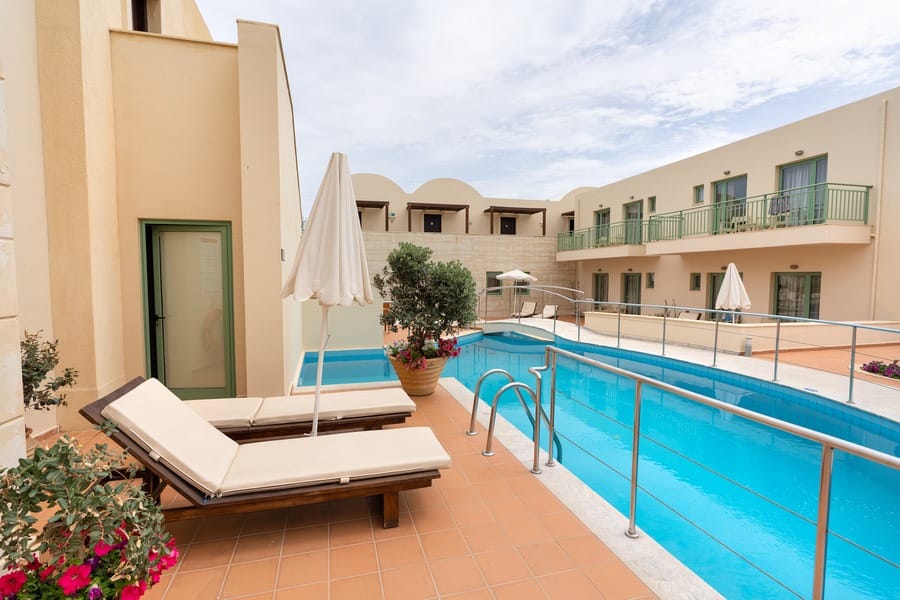
Not far from the Grand Bay Beach Resort is Cavo Spada, a family-friendly resort with a focus on health, fitness and leisure.
There’re daily fitness classes like yoga, Zumba, and beach volley ball, as well as an obstacle course, a spin room, bicycle hire, and 2 gyms (1 indoor, 1 outdoor). Located within the hotel's spa guests have access to a heated indoor swimming pool, a Jacuzzi, a sauna, and even Turkish baths.
Other activities include live music nights, Cretan nights, BBQ Nights, wine tasting, and olive oil tasting.
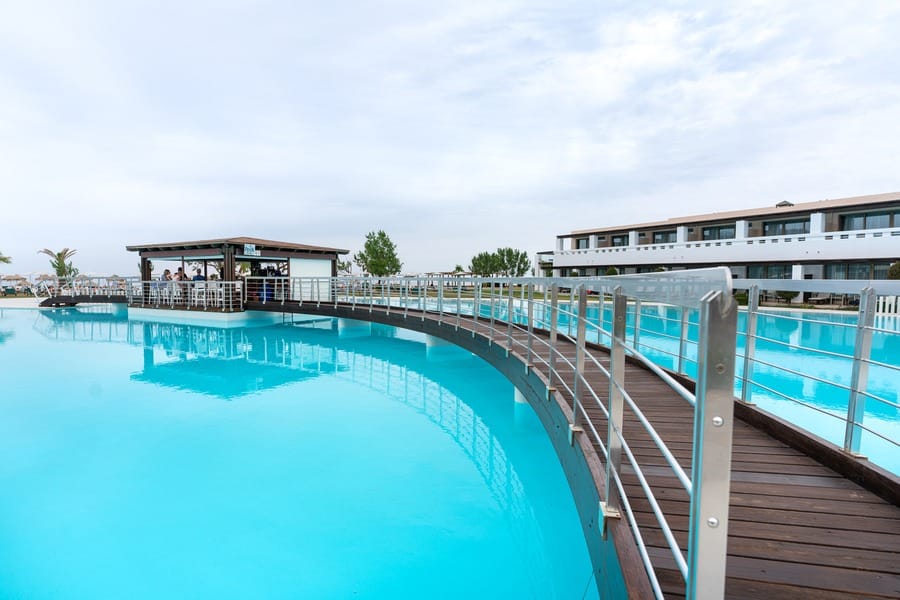
The Bottom Line
Australia & New Zealand’s modern culture has been permanently transformed by Greeks, immigrating Down Under in the wake of World War II. I have to admit, I never fully fathomed the tight bonds between these unlikely friends. But after experiencing this tour in Crete , now I do.
When Greece faced their greatest threat during the most turbulent period in modern history, ANZACs heeded the call. Australia and New Zealand gave all they could, protecting Cretans like their own. In reciprocation, Greece gave back what Australia needed most – culture and good food (sorry England).
Today most international tourists see Crete as a drool-worthy vacation destination with pretty pink beaches, and legendary cuisine. But there’s more. Just look below the surface.
This is an island of history and drama, sacrifice and courage. Ground zero for the pivotal battle that proved there can be victory in defeat. That the underdog can still taste victory.
The ramifications of the 1941 Battle of Crete have touched every person on this planet.
And I, for one, am grateful to learn all this… without a classroom in sight.
If you enjoyed this article, you might also like...
5 best day trips from athens, greece: meteora, delphi, sailing, islands & cape sounion, where to eat in athens: 5 best foodie experiences.
- 12 Reasons Why You Should Visit Turkey’s Çanakkale Region
- Italy By Train: Easy 21 Day Rail Itinerary For 6 Destinations
- Best Portable WiFi Hotspot For Travel In 2023
More posts from Greece
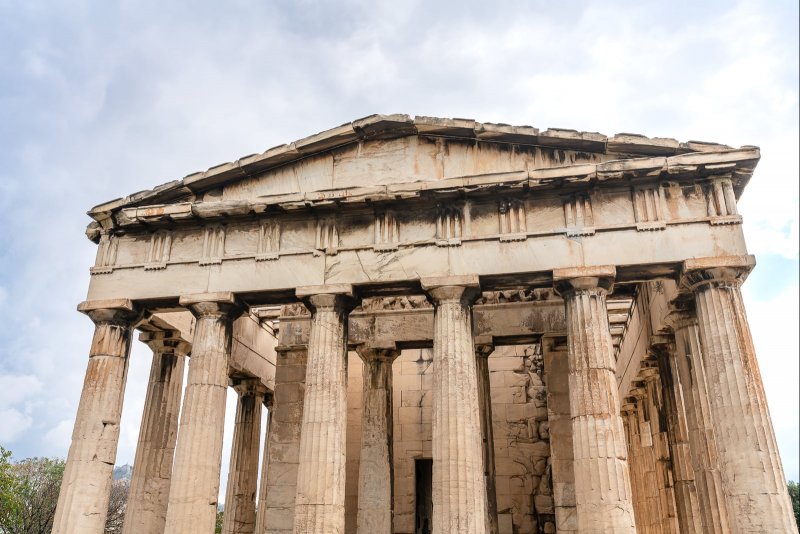
Best Walking Tour in Athens For A First Time Visitor
Athens can be intense for a first-time visitor. You’ve got over 5,000 years of history crammed into one bustling city. It can feel completely overwhelming to try to absorb…

How To Spend 4 Days In Athens: Best Historical Sites, Discount Tickets, Museums & Restaurants
There’s something about Athens that is simply timeless. The famous Classical period ended over 2,300 years ago, yet when we think of Athens, we still imagine Aristotle, Socrates,…

How To Discover Modern Athens In 5 Easy Steps
3000 years of history is impossible to ignore in Athens, from your first glimpse of the iconic Acropolis, to ancient remnants scattered throughout the city centre. But there’s more…

Athens Cruise Shore Excursion Ideas: 5 Unusual Experiences
Are you planning a cruise in the Mediterranean Sea? Sailing along sparkling deep turquoise waters between paradisiac islands on a Mediterranean cruise is the kind of stuff travel…

With over 3,000 years of history and culture beckoning, it’s no surprise there’s a lot to see and do in Athens. But Greece’s capital is also a convenient jump-off point to explore…

In Athens, Greece, people don’t just eat to live, they live to eat. And I don’t blame them. Meals often span over 2 or 3 hours and start with meze and aperitifs to really get your…

Greek Nightlife Tour: Discover Athens’ Bars, Food and Drinks Like A Local
An authentic nightlife experience to discover local Athenians hangout spots. We tried talagani cheese, local wine, mastic ice cream, rakomelo and more with the help of a friendly…

Food In Crete: The Food, The Whole Food, And Nothing But The Food
There is one lady in Crete determined to bring back the Cretan diet. And she is doing it from the very house she was born in. From the very oven her mother cooked in. And inspired…
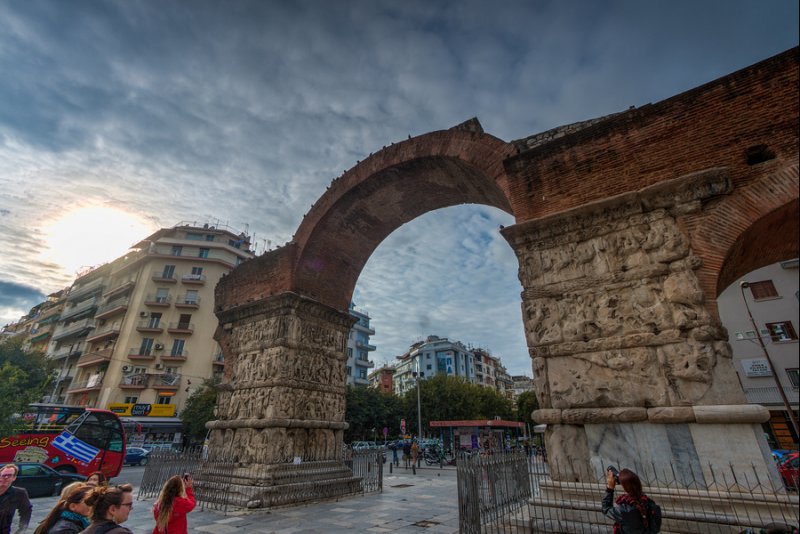
Photography Tour Around Thessaloniki, Greece
I recently spent 3 days in Thessaloniki situated along the north of Greece. There are few places in the world where the evidence of colliding empires is so vivid as this particular…
Reader Comments...
Very informative thank you
Hey, Very Nice Content and useful article. It's gonna help me a lot.
Thanks for writing such a great post This post is Very informative. Result
Write Your Comment
Please DO NOT include links, URLs or HTML in your comments - they will be automated deleted and you will waste your time.
HOT: My top 48 photos of 2022 .
My name is Josh and I'm an Aussie who has been travelling the world non-stop for 12 years , and explored 70+ countries so far. I'll help make your next vacation awesome with first-hand guides and essential travel tips.
(click my smiling face to find out more)

Latest Post

17 Things To Do In Bali For Couples
Bali is a haven for couples of all ages. I recently returned to Bali for my 20th visit, and I was inspired to explore parts of the island I had not seen before, as well as revisit…
Travel Hacks

Best Free eSIM Plan for Travel: Try Before You Buy
I’m always looking for travel hacks to save money and get more bang for my buck. I recently came across an established international eSIM provider that has just started offering a…
War Memorial Noginsk
- Second World War (1939-1945)
- Russia Moskovskaja oblast Noginsk
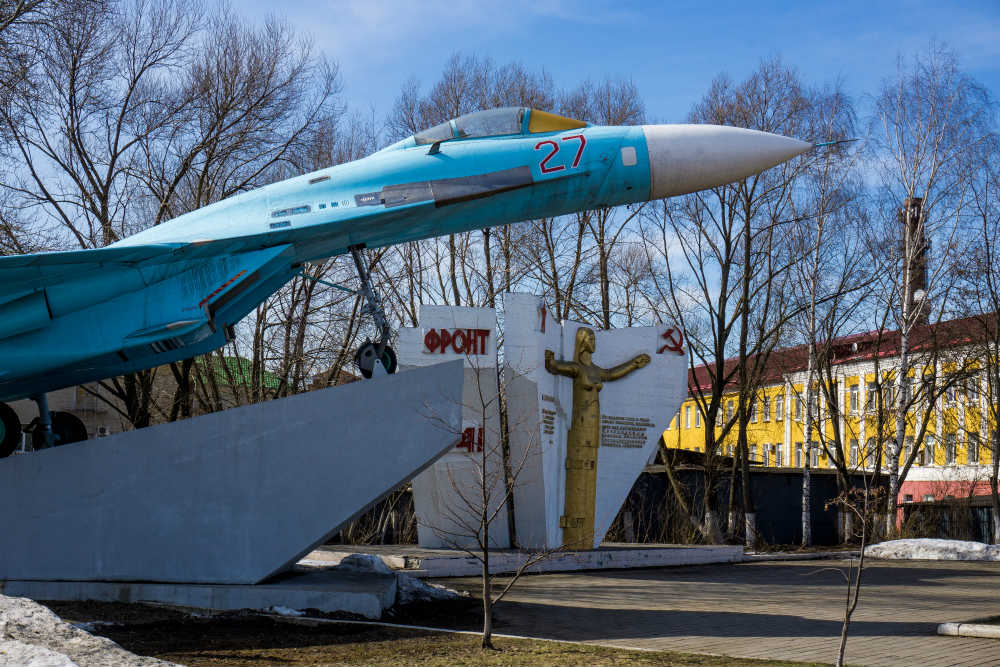
This memorial in the district Glukhovo in Noginsk was erected in 1985 on the 40th anniversary of the victory in Second World war. The author of the monument is P.V. Peretinkin. The monument is dedicated to the natives of the district Glukhovo worked on the factories or fought on the fronts of the great Patriotic war. On 4 November 2015 the military fighter SU-27 was placed next to the monument. The inscription on the pedestal under Su-27 is: "To the native city from academician V. E. Fortov, 70 years of the great Victory in 2015".
Do you have more information about this location? Inform us!
- Text: Fyodor Telin
- Photos: Fyodor Telin
Where is it?
Helaas geen map gevonden.
55.875735, 38.465646

Looking for reliable information or news facts about WW2? Do you want to create your own battlefield tour to sights of wars from the past? Or are you interested in war medals and their recipients? TracesOfWar.com tells you more!
More information
- About us / FAQ
- Contributors
© STIWOT , 1999-2024. All rights reserved. Privacy statement, cookies, disclaimer and copyright

- RUSSO-UKRAINIAN WAR
- BECOME A MEMBER

Britain’s Strange Defeat: The 1941 Fall of Crete and Its Lessons for Taiwan
Post title post title post title post title.
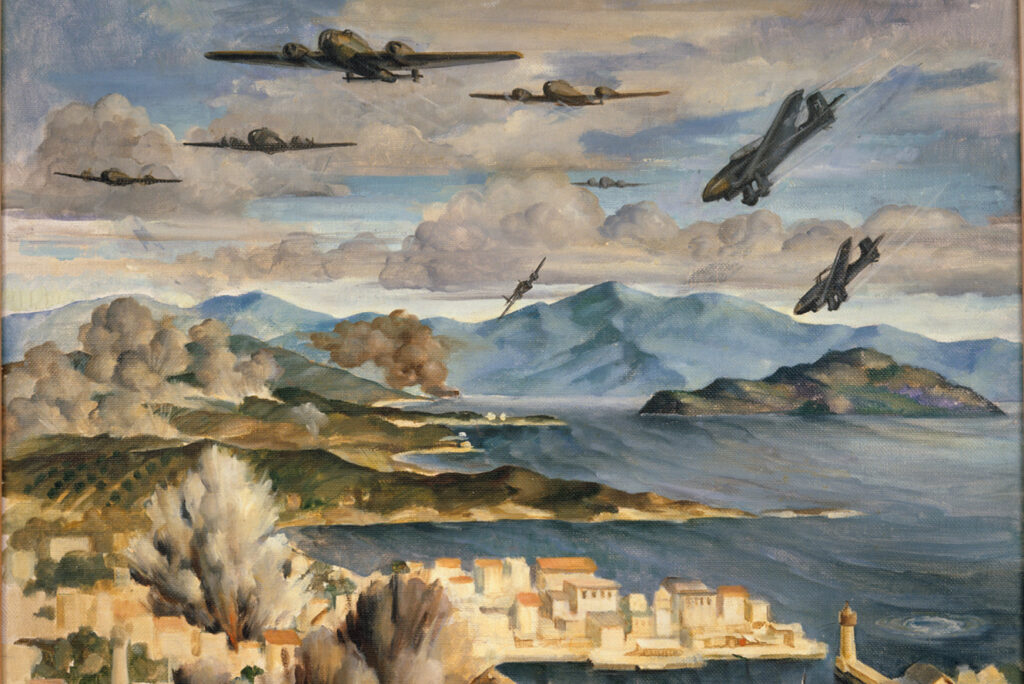
Editor’s Note: This is the first in a running series of essays by Iskander Rehman, entitled “ Applied History ,” which seeks, through the study of the history of strategy and military operations, to better illuminate contemporary defense challenges.
[I]t remains astonishing to me that we should have failed to make Suda Bay the amphibious citadel of which all Crete was the fortress. Everything was understood and agreed, and much was done; but all was half-scale effort. We were presently to pay heavily for our shortcomings.” – Winston Churchill, reminiscing on the loss of Crete and its immense natural harbor, Suda Bay.
In the early morning hours of May 20, 1941, screaming swarms of German Messerschmitts and Stukas suddenly materialized in the cloudless cerulean skies over Crete. Ferociously strafing and dive-bombing the anti-aircraft batteries of the island’s sleep-addled defenders, they were closely followed by a rumbling phalanx of Dornier 17 and Junker 88 bombers. Behind this flew a veritable airborne armada — 70-odd gliders filled with troops from the Seventh Airborne Division’s Storm Regiment and wave upon wave of lumbering Junker 52s crammed to the gills with nervous young paratroopers. For Gen. Bernard Freyberg — the highly decorated commander of Crete’s 32,000-strong garrison of British, Australian, and New Zealander troops, supplemented by close to 10,000 Greek soldiers — there was little cause for undue alarm. Plied with a steady stream of Ultra intercepts, the burly New Zealander had known for weeks that the Germans were preparing an invasion of the island. He retained something of a blithe self-confidence in his defensive preparations. So much so, in fact, that he calmly continued to enjoy his breakfast on his villa’s veranda, even as the bright blue sky above him grew increasingly pockmarked with Luftwaffe aircraft. Convinced that the bulk of the enemy’s invasion force would be ferried in by sea, where they would run afoul of the Royal Navy, the World War I veteran, like many of his fellow officers, remained dubious of the effectiveness of any large-scale airborne operation.
This dismissal of the viability of airborne assault against a well-entrenched position was largely shared in London, although some remained confused as to why Freyberg appeared to remain so focused on the threat of seaborne invasion when all intelligence clearly pointed to the prime vectors of an attack coming from the air. As we shall see, these key differences in threat prioritization and intelligence analysis would later prove critical. Nevertheless, and notwithstanding these early differences in opinion, the mood of the defenders on the morning of battle remained relatively buoyant. Indeed, only a few weeks earlier, Prime Minister Winston Churchill, had, in a moment of scrappy optimism, confided that while everything should be done to enable the “stubborn defense” of such a critically positioned island stronghold, Britain’s unerringly precise forewarning of German plans would also provide an unexpectedly “ fine opportunity for killing the parachute troops .” On May 9, the Chiefs of Staff Committee, in a telegram to the commanders-in-chief in the Middle East and Mediterranean, had relayed their own singularly sanguine assessment of the looming conflict’s outcome: “So complete is our information that it appears to present heaven sent opportunity of dealing enemy heavy blow [sic]. It is now question of preparing subtle plan calculated to inflict maximum losses upon enemy.”
Over the course of the next few days, however, this stolid sense of confidence would progressively dissipate, to be replaced by one of bafflement and anguish, as the numerically superior defenders were first overwhelmed, then completely overrun by Germany’s assault. Despite suffering appalling levels of casualties at the hands of vengeful Cretan villagers and Commonwealth forces, thousands of German troops were shuttled across the Aegean onto Crete from newly enlarged or developed aerodromes on the freshly conquered Greek mainland. Fighting their way through thick olive groves and over craggy, dust-choked hills, these lightly armed paratroopers battled fiercely to secure permanent lodgments at key Cretan airfields such as Maleme, before finally establishing the requisite bridgehead allowing for their uninterrupted reinforcement by air. From that moment on — and largely thanks to the protective bubble proffered by the Luftwaffe’s dominance of the air — an incessant flow of battle-hardened German mountain troops poured into Crete, at one stage landing at a rate of 20 troop carriers per hour (each of which could carry approximately 20 people and four equipment containers). Over the course of a little less than two weeks, the Axis found themselves in full control of one the most strategically positioned territories in the Mediterranean, with Crete’s garrison forces either killed, captured, or hastily evacuated to British-controlled Egypt by sea. Coming after a series of bruising retreats, whether from Dunkirk in June 1940, or from the Greek mainland in late April 1941, the fall of Crete constituted a severe blow to British morale — all the more so because of its largely unexpected character, given London’s pre-existing assumptions.
And yet this strange defeat remains a remarkably underexplored historical case study in the fields of security studies and defense analysis. This is somewhat surprising, given its apparent educational value and strategic relevance to some of the most pressing contemporary military challenges in the Indo-Pacific theater.
Naturally, one cannot view this episode in isolation. As in any future hypothetical clash of arms in-between the United States and China and centered on contesting island territories ranging from the Senkakus , Thomas Shoal , or Taiwan, the 1941 battle for Crete can only be adequately analyzed within the context of a more protracted struggle and a broader campaign theater. The tragedy of Crete constituted but one grim chapter within the multi-year attritional contest between the Axis powers and a newly isolated British Empire for control of the Mediterranean basin in the wake of the fall of France. Its study reminds us of the importance of cartographic familiarity, of logistics, and for sea powers to think — as Nicholas Spykman famously noted — in “terms of points and connecting lines dominating an immense territory.” The strategic value attached by competing actors for the control of various Mediterranean islands, archipelagoes or islets — from Sicily to Malta or Karpathos — becomes self-evident when these same territories are viewed through the hard prism of logistical shipping and resupply. Even more so when one puts oneself in the shoes of cognitively overwhelmed defense planners struggling to mentally overlay shipping convoy routes, combat aircraft radii, and subsurface interdiction campaigns across an increasingly cramped, crowded, and contested maritime space. The battle for Crete thus formed an integral sub-component of a much broader campaign for theater dominance , a series of tightly interlocking conflicts ranging from the scorching deserts of North Africa to the snow-capped peaks of Thessaly.
The 1941 Cretan campaign also provides us with an interesting example of how, on occasion over the course of a protracted war, each power’s leadership can fundamentally misinterpret their adversary’s overarching intentions and grand-strategic orientation. Germany wished to shield its southward flank prior to the launching of Operation Barbarossa against the Soviet Union, as well as its precious Romanian oilfields. Meanwhile, following the evacuation of its forces on mainland Greece, Britain was committed to the forward defense of Egypt, the hub from which many of its empire’s logistical spokes radiated. Eyeing Crete, each party was convinced the other would use it as stepping-stone for renewed offensive operations and long-range airborne interdiction. Hence, each side engaged in their own form of motivated reasoning , driven primarily by what Carl von Clausewitz would have termed negative aims, and viewed possession of the large island as critical to their defense.
And last but not least, Britain’s Cretan debacle reminds us of the enduring truth of Helmuth von Moltke’s famed adage : “no plan of operations reaches with any certainty beyond the first encounter with the enemy’s main force.” When engaging in contemporary operational contingency planning for an assault on Taiwan, it behooves us to examine every potential axis of attack — including those that are less frequently examined than gray-zone subversion , a putative blockade , or seaborne invasion. All while recognizing that, in reality, in the grim event of a full-scale invasion of Taiwan, elements of all these approaches would most likely be employed by the People’s Liberation Army in tandem.
The Battle of Crete
The German invasion of Crete constitutes a pivotal moment in the annals of warfare. Indeed, it constitutes the first division-sized airborne assault. It fully succeeded in its overarching objectives despite the almost wholesale destruction of its lightly defended convoys of seaborne reinforcements at the hands of the Royal Navy. During its earlier campaigns in Western and Northern Europe, the Third Reich had employed paratroopers in a relatively ancillary and piecemeal fashion, tasking smaller bodies of these soldiers with the sabotage or capture of select enemy infrastructure such as bridges, airfields, and — most famously — the sprawling Belgian fortress of Ében-Émael in May 1940. From the moment of their inception, there had been vivid debates within the Nazi military establishment as to how these freshly designed airborne units should be deployed, with some officers arguing that their role was primarily to engage in small-unit disruptive actions behind enemy lines, and others urging the High Command to project them en masse in large-scale vertical envelopment operations.
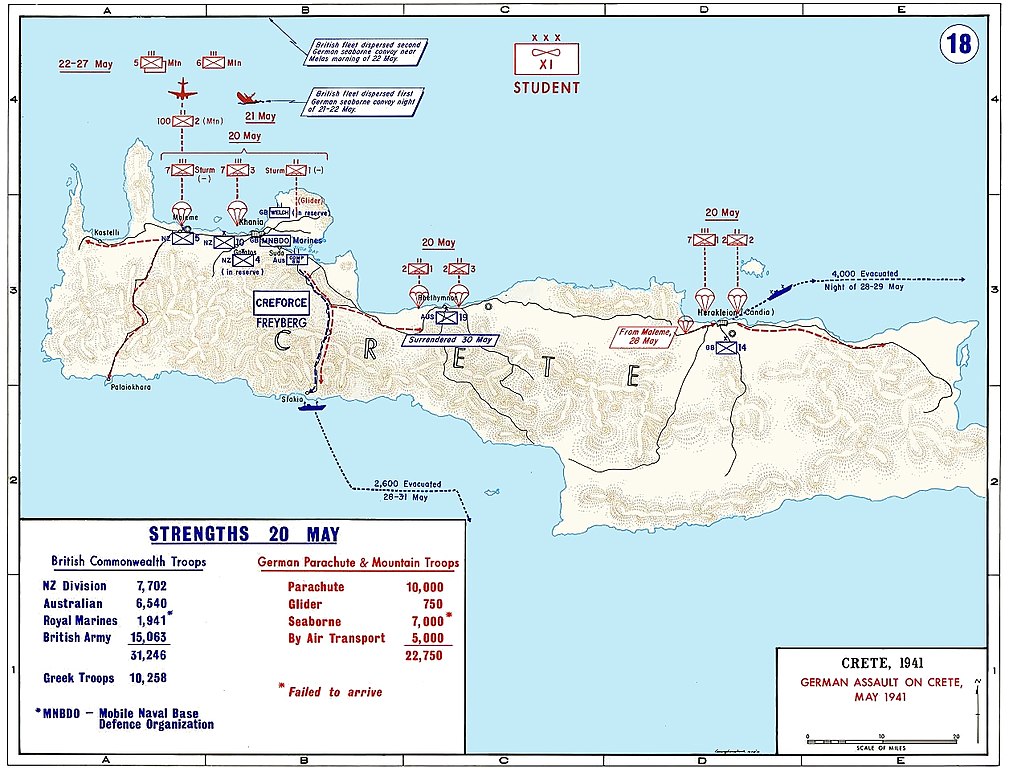
The Oberkommando der Wehrmacht’s decision to greenlight the audacious recommendations of Generaloberst Kurt Student , the Luftwaffe’s great pioneer of airborne operations, and launch Operation Mercury thus came after much internal debate and prevarication. While some leading German officers had expressed concern over the potential diversion of troops away from the herculean preparations for Operation Barbarossa later that year, others had suggested postponing the invasion of Crete in favor of a mass airdrop over the equally strategic British island bastion of Malta. All recognized, however, that the spearhead of any invasion of either of these territories would have to be projected by air, rather than by sea. Indeed, whereas the Royal Navy still possessed a clear quantitative and qualitative edge over its Italian and German foes in the Mediterranean, the Royal Air Force had suffered grievous losses (in addition to the loss of much of its air-basing infrastructure) during the frenetic British evacuation of mainland Greece earlier that year. Over the course of that retreat, 209 aircraft were lost — 72 in combat, 55 on the ground, and 82 destroyed to prevent their capture and use/cannibalization by the Germans. Following the relocation of most of the surviving aircraft to the North African theater, Crete was left with only a half-squadron of Hurricanes and a few other obsolescent aircraft. Moreover, the island was not only surrounded by a ring of Axis air bases, but also situated at the extreme edge of the combat radius of British fighters operating out of Egypt. As a result, the Luftwaffe now enjoyed a clear aerial superiority across the Eastern Mediterranean.
Initially somewhat reluctant, Adolf Hitler ended up approving Reichsmarschall Hermann Göring and Student’s brazen concept of operations, validating the idea of a division-sized airborne assault. This grudging concession was caveated by his insistence on expanding the number of target drop-zones, and on ferrying in supplementary reinforcements by sea, so that the beleaguered Allies would not be able to rapidly concentrate their forces to overwhelm the first waves of assailants. By combining amphibious landings with airborne operations, the German attackers would, the Führer observed , have “more than one leg to stand on.”
If Hitler and the Nazi High Command had possessed a fully accurate picture of the order of battle, however, they probably never would have embarked on such a risk-laden venture. Indeed, German intelligence had failed to detect a number of well-camouflaged enemy positions and arms depots, and until the very eve of the operation they had grossly underestimated the number, equipment, and morale of the island’s defenders and local inhabitants. Operating under the assumption that the British garrison on Crete amounted to only 5,000 men, the Abwehr also appeared convinced that the traditionally anti-monarchist Cretans would welcome their new German overlords. In reality, the garrison was over eight times that size, and the local population, from village housewives to local priests, attacked the bewildered Nazi paratroopers en masse and with a murderous intensity, wielding antiquated hunting rifles and bludgeoning them to death with farming tools as soon as they first started landing amid the island’s sun-scorched fields and villages.
In addition, the Abwehr remained unaware of the fact that many of the details of their military preparations had already been compromised by London’s decryption of German communication ciphers through Ultra — the codename given to the intelligence gleaned from the cracking of the Enigma machine over the course of 1940. And yet Freyberg — a prisoner to his own preconceived notions and prejudices on how an island seizure campaign would unfold — repeatedly failed to capitalize on this marked informational advantage over his Axis opponents. The intelligence intercepts clearly indicated that any seaborne invasion would only occur in the form of a second wave and once a secure air bridge had been established. Yet instead of prioritizing either the defense or preemptive destruction of the island’s three main north coast airfields at Heraklion, Maleme, and Rethymno, Freyberg chose to implement what amounted to a “ damaging compromise both in the disposition of his troops and in his operational orders ,” deploying a large number of soldiers seaward to fend off the amphibious assault he still believed would comprise the main thrust of the German invasion force.
Over the next 12 days, a ferocious battle would be waged across the 160-mile-long and 40-mile-wide island. Tangled in foliage or snared in tree branches, the first flock of assailants made for easy prey. One particularly unlucky group of paratroopers drifted right on top of the New Zealand 23rd battalion’s headquarters, whose officers calmly began shooting them down without even rising from their seats. By the end of the first day, given the staggering number of casualties (close to 2000), it looked as though the invading force was on the verge of complete annihilation. Consumed with fears of ignominious failure, German commanders began to contemplate a complete abandonment of the mission. Over the next few hours, however, additional waves of paratroopers eventually succeeded in securing, with the aid of heavy air support, the airfield of Maleme — a turning point in the conflict which then allowed for a steady influx of German mountain troops, light artillery, and motorcycle troops (the latter were highly effective in ranging across the dirt roads that wound through the island’s crenellated terrain).
By June 1, the Germans had succeeded in gaining full control of the island, and the last remaining Commonwealth forces surrendered. In a repeat of its heroic fighting retreats from Dunkirk or mainland Greece, the Royal Navy succeeded yet again in evacuating thousands of troops, all while under heavy aerial bombardment. Yet although 18,000 Commonwealth soldiers were ferried to safety, another 11,000 men found themselves stranded on the island and condemned to years of grim captivity. A few hundred slunk their way into the beetling crags and deep, shadowy ravines of the White Mountains, where they were sheltered by courageous Cretan villagers. While many were subsequently captured, some succeeded in evading German hunting parties and were later evacuated to Egypt by submarine. A small, but brutally effective, minority lent their efforts to those of the Special Operations Executive and of the fabled Cretan resistance , waging relentless guerrilla warfare on the island’s Nazi occupiers until its eventual liberation in 1945.
During the desperate evacuation, the Royal Navy’s extant surface fleet in the Mediterranean was nearly crippled by the loss of three cruisers and eight destroyers, along with over 1,800 sailors, and the savage goring of 17 additional frontline warships, such as the HMS Formidable , an aircraft carrier. Fighting to fend off hundreds of Axis fighters and bombers with perilously low levels of anti-aircraft ammunition and virtually no air support, British ships could only reliably conduct evacuations under cover of darkness. Meanwhile, with German squadrons able to refuel and rearm from neighboring air bases at their leisure, up to 462 Luftwaffe aircraft were deployed in continuous rotating sorties against Royal Navy vessels, whose crews, stretched to the very limits of their endurance, often found themselves forced to remain at their battle stations for over 48 hours at a time. One destroyer, the HMS Kipling, which miraculously emerged unscathed from the Cretan campaign, was thus swarmed by over 40 aircraft that targeted it with more than 80 bombs over the course of just four hours. At one point during the evacuations, the British Admiralty, pointing to their rapidly mounting losses, asked Adm. Andrew Cunningham, the commander-in-chief of the Mediterranean Fleet, whether it was time to beat a hasty retreat. To this, the doughty seaman famously responded , “It takes the Navy three years to build a ship but it would take three hundred years to build a new reputation. The evacuation will continue.” At the conclusion of their heroic evacuation efforts, 59 percent of the British fleet in the Mediterranean had either been sunk or seriously damaged by German airpower. Yet Germany’s startling victory had not been wholly without cost either. Of the approximately 22,000 men who took part in the invasion of Crete, there were close to 6,500 casualties , with 3,774 of these either killed or listed as missing in action. Many of these, as mentioned earlier, had been slain within the first 24 hours of the invasion. 350 aircraft, including one third of the Luftwaffe’s Junker transport planes, had been shot down — and Germany had yet to fully replace these losses by the time of the abortive Stalingrad airlift in November 1942. Meanwhile, Hitler — chastened by the operation’s pyrrhic toll — privately told Student over coffee at his Iron Cross awards ceremony that he would never again greenlight such a large-scale airborne operation, adding that Crete had “proved that the days of the parachute troop are over. The parachute arm is one that relies entirely on surprise, but the surprise factor has now exhausted itself.”
Lessons and Insights for Taiwan
At a time when U.S. military planning is consumed with the challenges of safeguarding another critically situated, mountainous island territory from invasion, a nuanced analysis of the factors behind the British Empire’s failure to provide for Crete’s adequate defense can provide U.S. and allied defense intellectuals with a number of instructive insights . Indeed, one can draw certain rough parallels between such past struggles for primacy over the Mediterranean and the current state of naval competition across some of the Indo-Pacific most heavily trafficked — and contested — waterways. In many ways, the South China Sea has emerged as the “ Asian Mediterranean ,” or middle sea, with Taiwan occupying a position athwart critical sealines of communication not so dissimilar to that of Sicily or Crete during World War II, or of Malta during the late Renaissance.
Moreover, evidence would suggest that the People’s Liberation Army, for its part, clearly sees the value of engaging in such exercises of applied history — particularly when it comes to the painstaking scrutiny of past archipelagic or island seizure campaigns, from the battle of Guadalcanal to the Falklands War . Meanwhile, contemporary sinologists have drawn attention to the critical role that Beijing’s steadily expanding airborne capabilities are slated to play in a number of China’s evolving concepts of operation — whether aimed directly at Taiwan or at smaller contested islets in the South and East China Seas. It would therefore behoove historically minded defense planners to channel some of their intellectual efforts into building out an exhaustive analytical repertoire of past instances of maritime invasion — and especially those that drew on a mixture of sea and airborne assets.
The Cretan campaign of 1941 remains illuminating with regard to the contemporary defense of Taiwan for three main reasons. First, it reminds us of the decisive role Chinese airpower would play in any invasion of Taiwan, and of the urgent need for Taipei to invest more heavily in a multilayered, resilient, and mobile air defense network. Second, it highlights the criticality of robust communication networks, of mission command, delegated decision-making, and general tactical responsiveness when countering large-scale airborne operations. And third, it casts an unfriendly light on the challenges inherent to playing an away game against an adversary operating on its own interior lines, emphasizing the importance of establishing a more geographically dispersed and logistically sustainable basing architecture in the Indo-Pacific.
Chinese Airpower and Taiwanese Air Defense
The battle of Crete was won by German airpower. With only limited air defenses and a handful of forward-stationed aircraft, the Commonwealth and Greek garrison forces on Crete were continuously subjected to heavy and psychologically demoralizing aerial attack, with the Luftwaffe carpet-bombing their positions in unbroken rotations, strafing troops and lines of communication with impunity. As Cunningham later observed in his memoirs , it rapidly became painfully evident that Britain’s localized naval advantage could not offset its deficiencies in airpower, or its limited anti-aircraft magazine depth. As a result, he glumly noted, “with our [Britain’s] complete absence of air cover, the Luftwaffe, by sheer weight of numbers, were having it practically their own way … gunfire from the best of ships cannot deal with aircraft which an officer who was there likened to a swarm of bees.” These difficulties — the absence of proper air support and the Royal Navy’s shell hunger — were compounded by the peculiarities inherent to Crete’s topography, he added, with its towering southward-facing mountain barrier, which sloped in many places directly into the sea, meaning that all major ports and airfields were situated on the northern coast of the island, “within easy range of enemy aerodromes.” “From the point of view of defense,” he wryly noted, “it would have suited us much better if the island could have been turned upside down.” Up until the end of his life, Cunningham was to remain firmly convinced that “three squadrons of long-range fighters and a few heavy bombing squadrons would have saved Crete.” Unfortunately for Crete’s defenders, however, those squadrons were simply not available at the time — or at least not within a viable operational radius. Those few Hurricanes that were belatedly sortied from bases in Alexandria were thus retrofitted with external fuel tanks, something that rendered them both more sluggish and vulnerable in aerial combat as the “armor plating behind the seats had to be removed and ammunition reduced to compensate for the weight of the extra fuel.” And for all their gallant efforts, the Free French and British fighter pilots who flew to the island’s defense were soon overwhelmed by clouds of German Messerschmitts who mobbed them like a “ horde of hawks on a single sparrow .”
Present-day Taiwan faces an equally, if not even more daunting form of airpower asymmetry. Its small air force of approximately 400 legacy fighters is hopelessly outnumbered by that of China, which is adding ever more fourth- and fifth-generation aircraft to its inventory, all while expanding and hardening its southeastern airfields at breakneck speed . And while much focus within the U.S. defense commentariat has (rightly) been laid on Beijing’s shipbuilding prowess, one should not overlook the troubling fact that the People’s Liberation Army Air Force is now also well on track — if it sustains its current rhythm of aircraft production — to be the largest air force in the world. In addition to this marked air imbalance, Taiwanese defense planners should also take into account the People Liberation Army Rocket Force’s increasingly robust inventory of cruise and ballistic missiles, which has more than doubled in size over the last three to four years. These missiles would play a central role in the opening phases of any “ joint firepower strike campaign ” directed at Taiwan and its air force, raining down on its fixed air defenses, airfields, and munition depots, while destroying any aircraft not concealed or parked within hardened shelters. As in Nazi Germany’s invasion of Crete, Beijing can only generate the follow-on conditions for a successful invasion of Taiwan by decisively wresting control of the air away from the island’s defenders. Rather than expending large amounts of resources in acquiring additional F-16s , or even F-35s— which, like the beleaguered British Hurricanes defending Crete, would soon find themselves hopelessly outnumbered — Taipei should focus on building out a more multilayered and survivable “ guerrilla air defense ” network. This would seek to better combine long-range air defense systems with shorter-range air defense systems along with vertical take-off and landing unmanned aerial vehicles , loitering munitions , and man-portable air-defense systems . In addition to investing more heavily in passive defenses (such as concealing and hardening) and rapid runway repair kits, priority should be given to more highly mobile, concealable, and attritable air defense systems over expensive fixed surface-to-air batteries such as the Patriot PAC-3 , which — while highly effective — takes a long time to set up and redeploy. For a relatively modest amount of money, Taiwan could thus invest in thousands of truck-mounted containerized surface-to-air missiles that could then be dispersed throughout the island, magnifying the targeting challenges for China’s air force and greatly extending the difficulty and duration of its air defense suppression campaign.
Finally, Taiwan should invest more heavily in its counter-strike capabilities. During the Cretan campaign, British forces suffered greatly from their inability to disrupt the tempo of Luftwaffe sorties by decisively striking at their points of origin, i.e., the string of newly built or acquired airfields on the Greek mainland or on neighboring islands. In line with Taipei’s most recent Quadrennial Defense Review and its “ overall defense concept ,” which stress the need to “construct asymmetric capabilities to strike the operational center of gravity and key nodes of the enemy,” the Taiwanese armed forces should devote more resources to the indigenous development and fielding of long-range cruise missiles such as the Hsiung Sheng II , along with their associated targeting infrastructure. These can then be used to hit back at Chinese runways, command centers, and embarkation points.
The Importance of Communications and Initiative in Counter-Airborne Operations
For Student, one of the great tactical virtues of airborne operations was their ability — through the effects of speed and surprise — to generate confusion and disarticulation among more sluggish and statically arrayed opposing forces. As he was later to note in his memoirs,
airborne troops could become a battle-winning factor of prime importance. Airborne forces made three-dimensional warfare possible in land operations. An adversary could never be sure of a stable front because paratroops could simply jump over it and attack from the rear when and where they decided. There was nothing new about attacking from behind of course, such tactics have been practiced since the beginning of time and proved both demoralizing and effective. But airborne troops provided a new means of exploitation and so their potential in such operations was of incalculable importance. The element of surprise was an added consideration; the more paratroops dropped, the greater the surprise.
Despite their quantitative superiority and foreknowledge of the German attack, Crete’s defending forces revealed themselves all too vulnerable to this form of vertical envelopment and dislocation. First of all, their lack of a proper mobile reserve in the form of trucks and Bren gun carriers made it challenging for Commonwealth forces to swiftly and decisively mop up successive waves of paratroopers, which soon spread, in accordance with Student’s own tactical predilections, like “ drops of oil ” across the map. But even if Freyberg had established such a rapid reaction force, its response time would have been negatively impacted by the sorry state of infrastructure on the island, with one visiting officer griping in the weeks leading up to the invasion that “not even the most elementary preparations had been made” to improve road connectivity between Crete’s main ports and airfields. And last but not least, as the great military historian Antony Beevor has rightly noted, the “ramshackle” state of the defenders’ communications proved to be their greatest weakness. Field telephones depended “on wires run loosely along telegraph poles” and were thus highly “vulnerable to bombardment and to paratroopers dropping between headquarters.” Adding insult to injury, the woefully insufficient number of wireless sets and signaling lamps meant that once the Luftwaffe had snuffed out the phone lines, there was little way for the geographically dispersed defenders to mount any form of coherently coordinated response to the ever-growing number of enemy incursions.
Present-day China attaches a similar importance to the operational benefits of shock and surprise when conducting airborne assault operations. Much like Student, the People’s Liberation Army portrays the close integration of amphibious, air assault, and airborne forces within the context of a Joint Island Landing Campaign aimed at Taiwan as constituting a “ three-dimensional landing operation .” Meanwhile, the 2006 Science of Campaigns describes the disruptive and chaos-inducing role of the rapidly modernizing People’s Liberation Army airborne corps during the critical initial phases of an invasion in the following terms:
[One must] immediately initiate attacks against the predetermined targets, taking advantage of the situation when the enemy’s (assessment of the) situation is unclear, they cannot organize effective resistance in time and the counter airborne landing troops have not yet arrived, to quickly seize and occupy objectives, actively complement landing force operations and accelerate the speed of the assault onto land, ensuring that the assault on land succeeds in one stroke.
One of the greatest operational benefits of airborne assault forces, the Science of Campaigns then goes on to note, is their ability to add to the general fog and friction of war, confusing and demoralizing the defender, and creating favorable conditions for follow-on activities “when the battlefield posture is jagged and interlocking, and the situation is complicated and confusing.” As Taiwanese forces shape and posture themselves to respond to such challenging combat contingencies, they should ensure they do not find themselves in the same position as Crete’s defenders in 1941, incapable of counterattacking rapidly and effectively within a logistically deteriorated and communications-degraded battlespace. Like Crete, Taiwan is a topographically challenging combat environment — its mountainous terrain provides ample opportunities for irregular warfare and asymmetric defense , but it also renders the island democracy more dependent on a few key transport arteries and logistical bottlenecks that would undoubtedly be targeted in the opening phases of a Chinese invasion. So would its main power plants. Unfortunately, imported coal, gas, and oil still comprise 82 percent of Taiwan’s power generation, something that renders its energy grid acutely vulnerable to kinetic, cyber, or electromagnetic attacks. Taiwan’s digital infrastructure and communications network could prove equally brittle, with over 97 percent of its global internet traffic carried via a handful of easily severed undersea cables.
In order to offset these clear vulnerabilities, Taiwanese forces should enhance their ability to “fight dark” within contested, scrambled, and chaotic environments, equipping counter-airborne assault platoons with all-terrain vehicles, shortwave radios , man-portable air defense systems, first-person-view drones, and shoulder-fired anti-armor systems such as Javelin . Perhaps most importantly, this will need to be accompanied by a genuine transformation in Taiwanese military culture and operational practices, as these small units would be required to operate largely autonomously for extended periods of time. This will require a broader shift away from one recent report rightly describes as a “highly centralized [Taiwanese] command and control structure that does not empower units to make tactical decisions,” and from sometimes overly scripted military exercises. And while the Taiwanese army should certainly continue training to repel large-scale amphibious landings, more focus should be put on enhancing its capacity to conduct an “ elastic denial-in-depth ” campaign across the island and on countering other, more unpredictable forms of assault, disruption, and sabotage.
Washington’s recent decision to quietly expand the scale and scope of training activities with Taiwan, with greater numbers of Taiwanese ground forces being sent in regular rotations to train on American soil, could provide a welcome opportunity for both partners to collaboratively reshape certain overly rigid aspects of Taiwanese military culture. The fact, for instance, that a growing number of Taiwanese noncommissioned officers will reportedly now partake in “training observation missions” in the United States is a step in the right direction. Indeed, working to better train and empower Taiwan’s noncommissioned officer corps is critical to instilling a more horizontal culture of disciplined initiative, or mission command , across its armed forces. U.S. advisory forces based in Taiwan — which have begun increasing in number — can also discreetly help guide this cultural shift.
The Challenges of Playing an Away Game
Some of the most fascinating debates involving British grand strategy and military operations during World War II are to be found in the notes of the impassioned parliamentary debates following the fall of Crete. Fending off a barrage of critiques regarding the island’s woeful state of preparedness for an airborne invasion and the fateful consequences of Germany’s crushing dominance in the air, Churchill pointed to the difficulties of playing an away game against an adversary that now controlled most of southern Europe:
Anyone can see how great are the Germans’ advantages, and how easy it is for the Germans to move their Air Force from one side of Europe to another. They can fly along a line of permanent airfields. Wherever they need to alight and refuel, there are permanent airfields in the highest state of efficiency, and, as for the services and personnel and all the stores which go with them — without which the squadrons are quite useless — these can go by the grand continental expresses along the main railway lines of Europe. One has only to compare this process with the sending of aircraft packed in crates, then put on ships and sent on the great ocean spaces until they reach the Cape of Good Hope, then taken to Egypt, set up again, trued up and put in the air when they arrive, to see that the Germans can do in days what takes us weeks, or even more. … The decision to fight for Crete was taken with the full knowledge that air support would be at a minimum, as anyone can see — apart from the question of whether you have adequate supplies or not — who measures the distances from our airfields in Egypt and compares them with the distances from enemy airfields in Greece and who acquaints himself with the radius of action of dive-bombers and aircraft.
The main “limiting factor,” the British prime minister went on to note, was not his country’s overall number of aircraft, but rather “transportation” — not so much “in the sense of shipping tonnage, but in the sense of the time that it takes to transfer under the conditions of the present war.”
In the event of a high-intensity conflict over Taiwan, the United States would face similarly daunting power-projection and sustainment challenges. With regard more specifically to airpower, China would be operating on interior lines and under the protective umbrella of its integrated air defenses, which, since its acquisition of the S-400 , now extend well beyond the Taiwan strait. As of now, the United States has only two air bases from which its fighter jets can conduct unrefueled operations over Taiwan, while China has close to 40 . Whereas China’s air force would be conducting sorties from coastal airfields positioned almost directly across the 100-nautical-mile-wide Taiwan Strait, Kadena Air Base in Okinawa — currently the largest U.S. Air Force base in the Indo-Pacific — is close to 450 miles from Taiwan. Just like Crete during World War II, it would greatly aid Taiwanese and U.S. defense planners if the island could be “turned upside down,” with its steep mountain range facing toward the Chinese mainland rather than in the opposite direction. Instead, Taiwan’s major semiconductor factories, power plants, highways, and population centers — 22 million of the country’s 23.5 million people — are all clustered in the western lowlands, right opposite the People’s Republic of China.
In order to offset China’s formidable inbuilt geographic advantages, the U.S. military will need to both increase its forward combat power and enhance its capacity for sustainment, as well as its resilience to disruption.
Recent successes in negotiating new basing arrangements — from Palau to the Philippines — offer the prospect of a more dispersed, resilient , and operationally “ agile ” regional force posture. Being able to one day , for example, permanently position aircraft in Northern Luzon, which is only 160 miles from Taiwan, could prove transformational in the event of conflict. In addition to expanding and diversifying its basing architecture in the region, the United States should also deepen, harden, and disperse forward-positioned munitions stocks and fuel-storage tanks, work to improve in-theater capabilities such as underway replenishment and at-sea reloading, and use allied shipyards in countries such as Japan and South Korea for in-theater maintenance and repair. And last but not least, it should encourage and assist Taiwan in stockpiling its own fuel, materiel, and munitions for a protracted conflict, with the full knowledge that — just as for the Royal Navy during the battle for Crete — it could prove exceedingly challenging to reinforce and resupply the island democracy once major hostilities have begun. Unlike the local Greek forces on Crete, it could transpire that Taiwan’s armed forces will have to defend their island largely by themselves — either for the duration of the campaign if an American administration less supportive of Taiwan decides not to intervene in its defense — or for a critical period during which the United States (and perhaps some of its regional allies, such as Japan) muster follow-on forces to come to its rescue.
The great Greek historian Polybius once caustically observed that there were two ways by which statesmen could improve the quality of their decision-making, either by going through the punishing process of their own trial and errors or by studying “those of others.” Making a similar point, albeit with his own characteristic bluntness, retired secretary of defense and Marine Gen. Jim Mattis once quipped that all military officers should study history, if only because “learning from others’ mistakes is far smarter than putting your own lads in body bags.” And indeed, applied history, provided it is done in a nuanced and discerning fashion , can greatly assist in this process of vicarious experiential learning. The loss of Crete was not only one of Britain’s most tragic defeats during World War II — it also seemed, in the eyes of many at the time, to be one of its most incomprehensible. After all, large-scale airborne assault operations had been deemed either too impractical or too dangerous. And indeed, such attempts at forcible entry remain rife with risk, as Russia’s bloody failure during the 2022 battle for Hostomel airport recently only made too clear. And yet one should never let preconceived assumptions about how an operation might unfold — or of what costs a determined adversary might be willing to bear — lull us into a sense of complacency, like the brave, but ultimately shortsighted Freyberg. The Cretan saga also serves as a useful reminder of how good intelligence collection and good intelligence analysis are two very different things . British and Commonwealth forces on Crete were provided with excellent and timely information on their adversary’s military plan of action, yet still chose to implement a defensive strategy that was overly linear in nature, under-resourced, and ill-tailored to the nature of the threat.
A few weeks after the defeat, in a memorandum to Gen. Hastings Ismay for the Chiefs of Staff Committee, Churchill privately excoriated Freyberg’s decision-making, noting that even if one made “allowances for the deficiencies” the commander had contended with in terms of munitions, materiel, and airpower, “the whole conception seems to have been of static defense of positions, instead of the rapid extirpations at all costs of airborne landing parties.” Part of the issue, he groused, was that British military commanders stationed at “Middle East HQ” had appeared to regard the defense of Crete as being a
tiresome commitment, while at the same time acquiescing in its strategic importance. No one in high authority seems to have sat down for two or three mornings together and endeavored to take a full forward view of what would happen in the light of our information, so fully given, and the many telegraphs sent by me and by the Chiefs of Staff.
Similarly, vacuuming up huge amounts of human, geospatial, signals, and imagery intelligence on China’s war making preparations is one thing, but making good use of this information to “take a good forward view” and anticipate the many ways by which the Chinese Communist Party, with its historic predilection for brinkmanship and subterfuge, may choose to conduct a major cross-strait operation, is another. In short, by learning from the 1941 fall of Crete and other underexplored episodes in military history, one can hopefully ward off the prospect of a similarly unwelcome form of strategic surprise.
Iskander Rehman is the Senior Fellow for Strategic Studies at the American Foreign Policy Council, and an Ax:son Johnson Fellow at the Kissinger Center. He can be followed on Twitter @IskanderRehman.
Mid-Afternoon Map: Why North is Up, Part Two
Coming to terms with the loss of turkey, horns of a dilemma, sweden, finland, and the meaning of alliance membership.

IMAGES
VIDEO
COMMENTS
Exploring the locations of the Battle of Crete—an important World War II battle—without a guide could leave you with only a patchy take on this pivotal event. With this tour from Chania, learn about the battle at its key sites, hearing how Nazi forces took Crete from the Allies in 1941. Visit the Maleme airfield, monuments, and cemeteries, and discover secret shelters and sites you might ...
The tour's description will start from the beginning of WWII and how the greatest war that the world has ever seen affected East-South Europe, Greece and Crete. There will be analytic descriptions about operation "Marita", the glorious Greek-Italian war of 1940 and under what circumstances the operation "Mercury" began.
The tour's description will start from the beginning of WWII and how the greatest war that the world have ever seen, affected East-South Europe, Greece and Crete. There will be analytic descriptions about operation "Marita", the glorious Greek-Italian war of 1940 and under what circumstances the operation "Mercury" began.
Day 6 - The battle for Heraklion. We visit the Historical Museum of Crete and explore the fighting around the Heraklion area. During the afternoon we will visit the Minoan Palace at Knossos and explore some of old Heraklion. We will also learn the story of the Kidnap of Heinrich Kreipe, a story which was made in to the film Ill Met by Moonlight.
The Battle of Crete Day Tour provides a comprehensive understanding of the battle and its significance in World War II. The tour visits key sites such as Maleme airfield, monuments, cemeteries, and secret shelters. Knowledgeable guides lead the tour and provide historical context.; The tour ends at the meeting point and has a cancellation policy with a full refund available for cancellations ...
Commencing with an in-depth analysis of the impact of WWII on East-South Europe, Greece, and Crete, we delve into the historical backdrop, beginning with Operation "Marita" and the Greek-Italian war of 1940. Day One invites you to the war theatre of Chania, where key locations such as Maleme, Tavronitis, and Galatas come to life.
Final Words. Enjoy the history of WWII with the 'WWII - The Battle of Crete Day Tour.' With knowledgeable guides, interactive elements, and small group sizes, this tour offers a profound understanding of the pivotal Battle of Crete. From exploring key sites to hearing personal anecdotes, visitors are treated to a captivating and educational experience.
Excellent WW2 (Battle of Crete) tour - Highly recommend this tour to anyone interested in WW2 / the Battle of Crete and the impact of war on Crete. Babis was a fantastic guide - informative, knowledgeable, hospitable, and gave a very balanced perspective. He efficiently steered us through the 6 hours of the tour and many stops without it ...
London Natural History Museum. San Diego Zoo Safari Park. British Museum. Xcaret. Aquarium of the Pacific. Antelope Canyon. 2024 Cultural & Theme Tours in Greece: Check out 60 reviews and photos of the WWII - The Battle of Crete Day Tour. Book now from US$116.74!
WWII Battle of Crete Tour would recommend it. Jul 2019. A great tour packed with interesting information and things to look at. The highlight was the trip to the home of the former Greek commando (who's name I have unforgivably forgotten) who has devoted his life to collecting memorabilia from the Battle. Truly unforgettable and a unique first ...
Crete Tours. See all things to do. WWII - The Battle of Crete Day Tour. 5. WWII - The Battle of Crete Day Tour provided by Fabulous Crete. Crete. Crete Tourism Crete Hotels Crete Bed and Breakfast Crete Vacation Rentals Flights to Crete Crete Restaurants Things to Do in Crete Crete Travel Forum Crete Photos Crete Map.
WWII - The Battle of Crete Day Tour. 5. WWII - The Battle of Crete Day Tour provided by Fabulous Crete. Crete. Hotels. Things to Do. Restaurants Flights Holiday Rentals Travel Stories Cruises Car Hire.
Experience Crete from a different perspective with our Battle of Crete Tour. It is no ordinary dry military history but an exploration of the Chania and Kisamos area and its relevance to the history of WW2 in Crete. The tour involves visits to the Souda commonwealth war cemetery, German war cemetery, the village of Galatas and bridge in the ...
This is a private tour with a 7-seater van for a maximum 6 guests (price is for 6 persons). Explore the battlefields and memorials where the first airborne-only attack in history took place. The Battle of Crete is unique because it's the first attack in history prepared and performed exclusively by airborne units! It was a man to man battle where belligerents had little support from their far ...
Exploring WWII history on the 'WWII - The Battle of Crete Day Tour' offers a unique opportunity to witness the island's significant past unfold. With expert guides leading the way, visitors are guided through key battle sites and hidden shelters, providing a deeper understanding of the events that shaped Crete during the war.
Explore Tours & experiences in Crete. In 2016, we decided to create a battlefield tour in Chania and focus on WWII and the battle of Crete facts. Yiannis, the youngest member of our company and his team, loving the 20th century's war history, is studying and reading about the battle of Crete for years. Running these tours for 2 years we got ...
About the Tour. This small-group 5-day tour explores the island of Crete, focusing on sites most significant to the ANZAC soldiers, like the places they hid from enemy forces, and beaches where they evacuated. It also includes time to explore the modern city of Chania and ruins of the ancient Minoan palace in Knossos.. The tour runs every year around mid-May to align with annual war memorial ...
The Battle of Crete ( German: Luftlandeschlacht um Kreta, Greek: Μάχη της Κρήτης ), codenamed Operation Mercury ( German: Unternehmen Merkur ), was a major Axis airborne and amphibious operation during World War II to capture the island of Crete. It began on the morning of 20 May 1941, with multiple German airborne landings on Crete.
This memorial in the district Glukhovo in Noginsk was erected in 1985 on the 40th anniversary of the victory in Second World war. The author of the monument is P.V. Peretinkin.
With this tour from Chania, learn about the battle at its key sites, hearing how Nazi forces took Crete from the Allies in 1941. Visit the Maleme airfield, monuments, and cemeteries, and discover secret shelters and sites you might miss alone. Uncover World War II's Battle of Crete on a day trip from Chania by minivan.
We were presently to pay heavily for our shortcomings.". - Winston Churchill, reminiscing on the loss of Crete and its immense natural harbor, Suda Bay. In the early morning hours of May 20, 1941, screaming swarms of German Messerschmitts and Stukas suddenly materialized in the cloudless cerulean skies over Crete.
Moscow Oblast (Russian: Московская область, romanized: Moskovskaya oblast, IPA: [mɐˈskofskəjə ˈobləsʲtʲ], informally known as Подмосковье, Podmoskovye, IPA: [pədmɐˈskovʲjə]) is a federal subject of Russia (an oblast).With a population of 8,524,665 (2021 Census) living in an area of 44,300 square kilometers (17,100 sq mi), it is one of the most densely ...
FC Saturn Moscow Oblast (Russian: ФК "Сатурн Московская область") was an association football club from Russia founded in 1991 and playing on professional level between 1993 and 2010. Since 2004 it was the farm club of FC Saturn Moscow Oblast. In early 2011, the parent club FC Saturn Moscow Oblast went bankrupt and dropped out of the Russian Premier League due to huge ...
In 1938, it was granted town status. [citation needed]Administrative and municipal status. Within the framework of administrative divisions, it is incorporated as Elektrostal City Under Oblast Jurisdiction—an administrative unit with the status equal to that of the districts. As a municipal division, Elektrostal City Under Oblast Jurisdiction is incorporated as Elektrostal Urban Okrug.